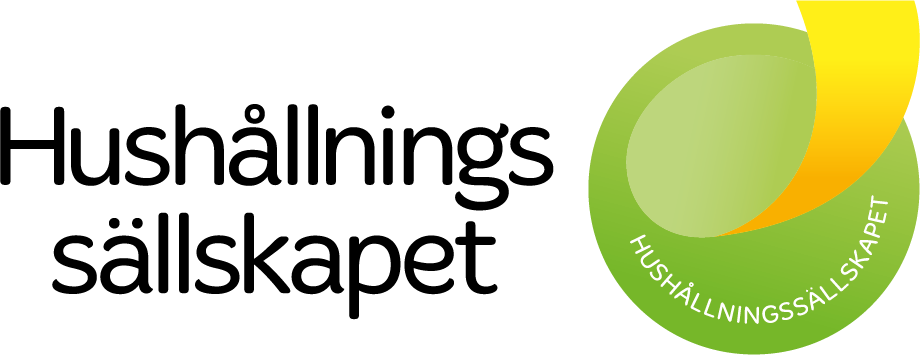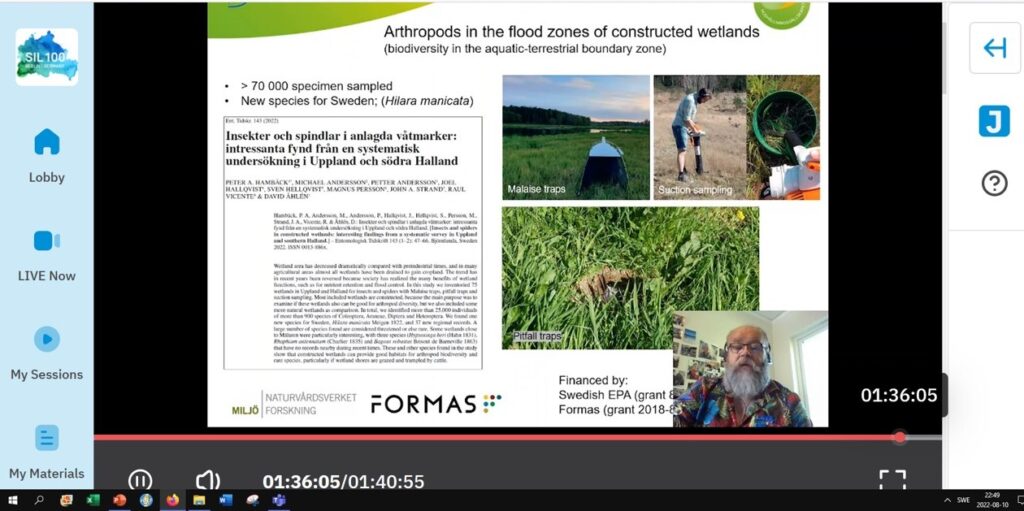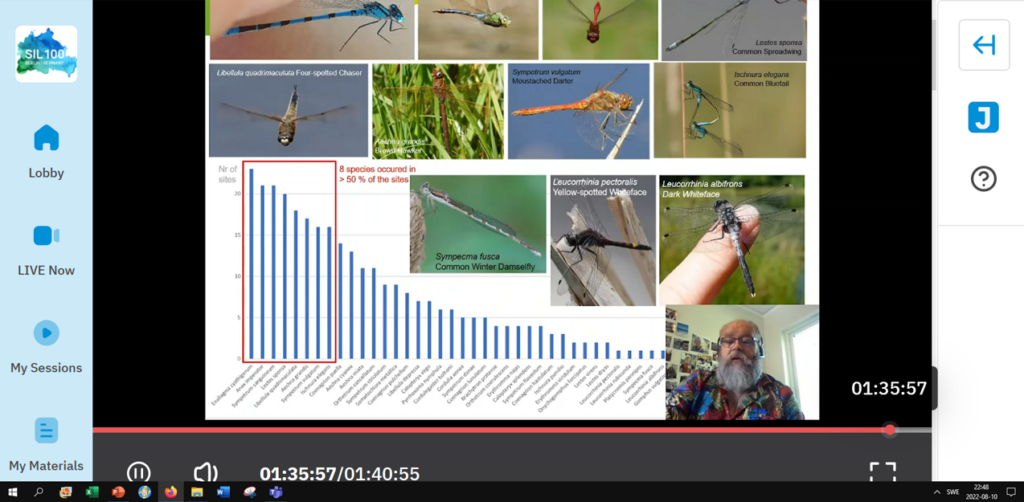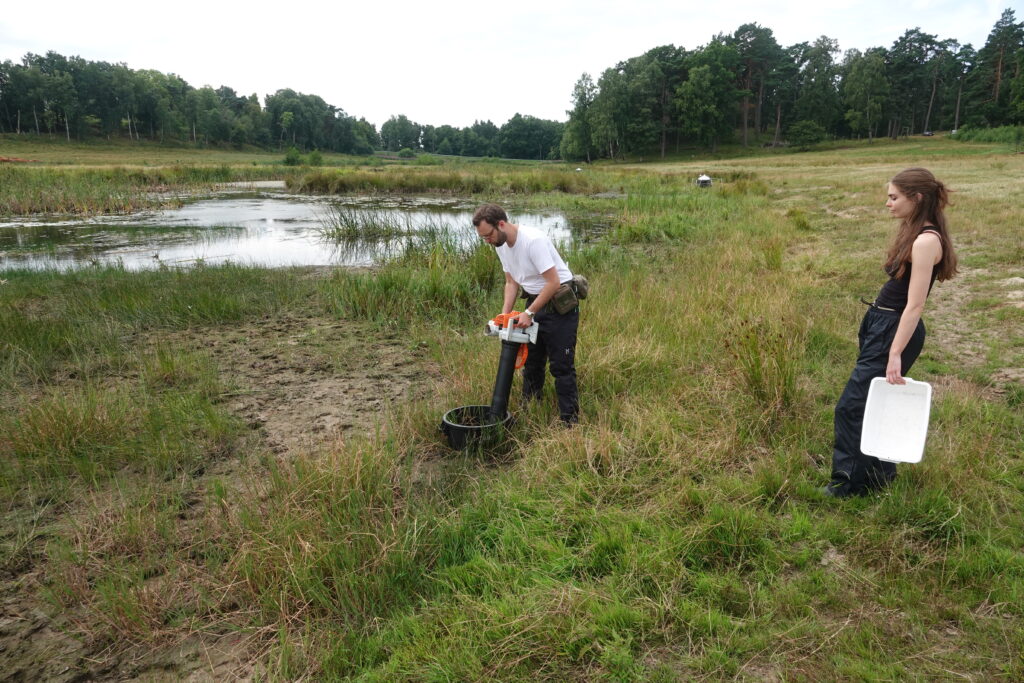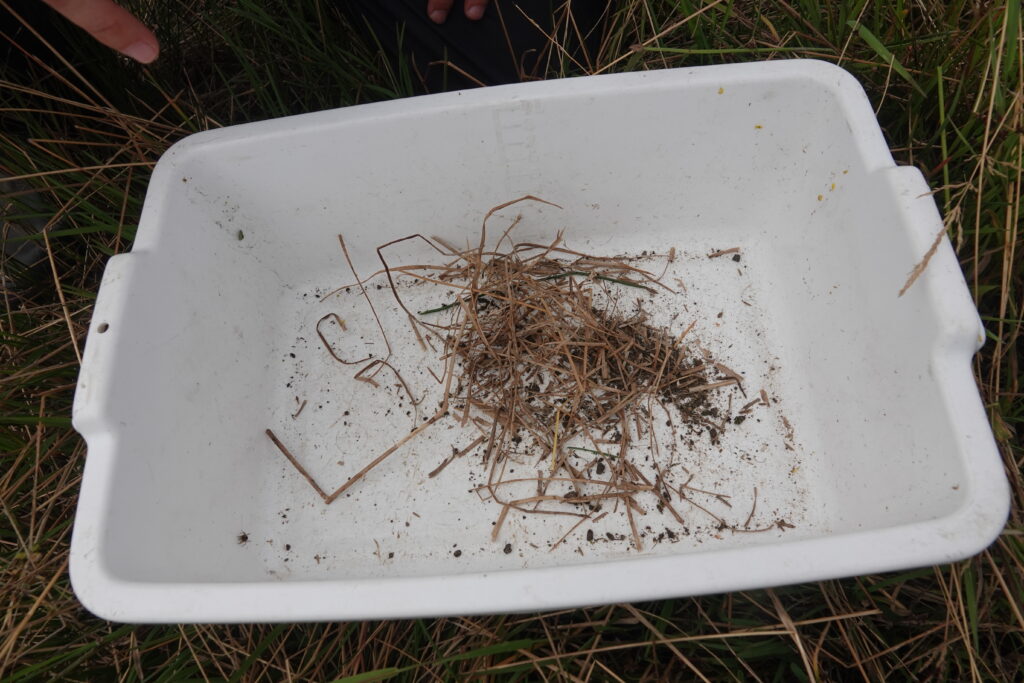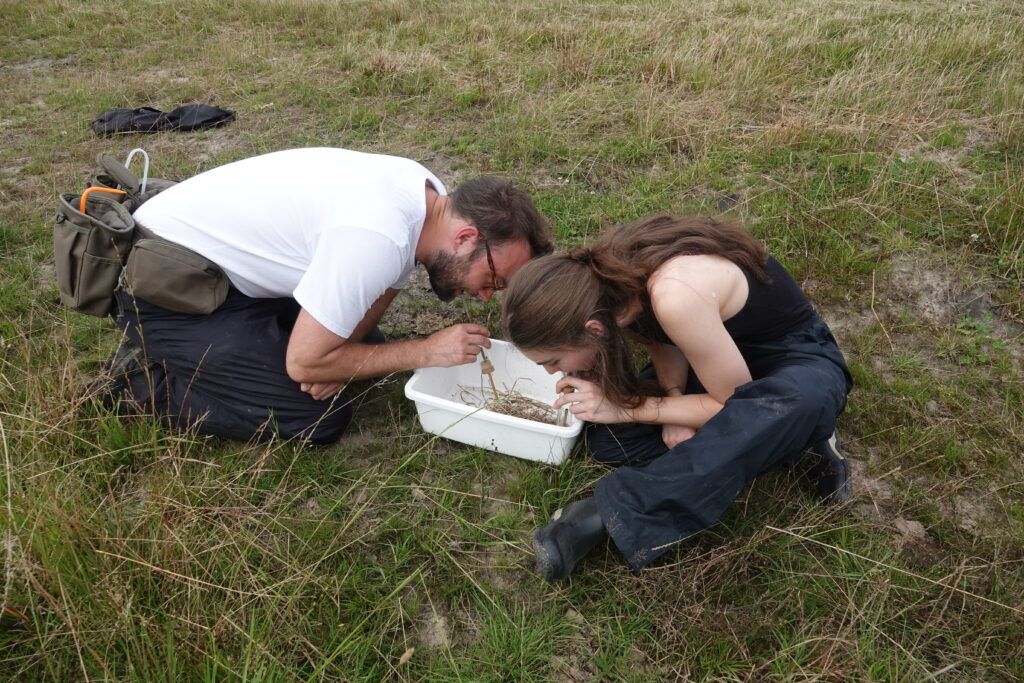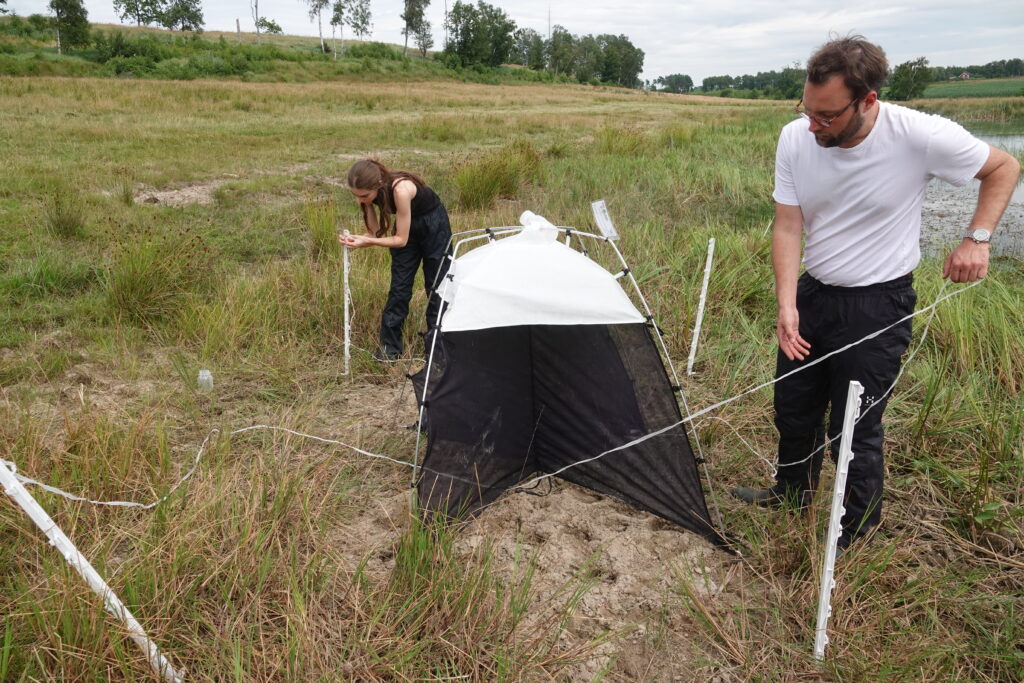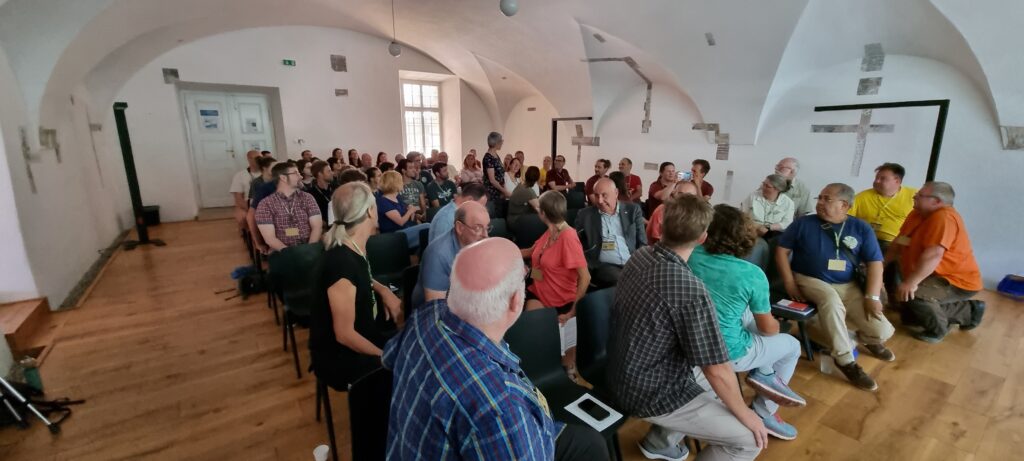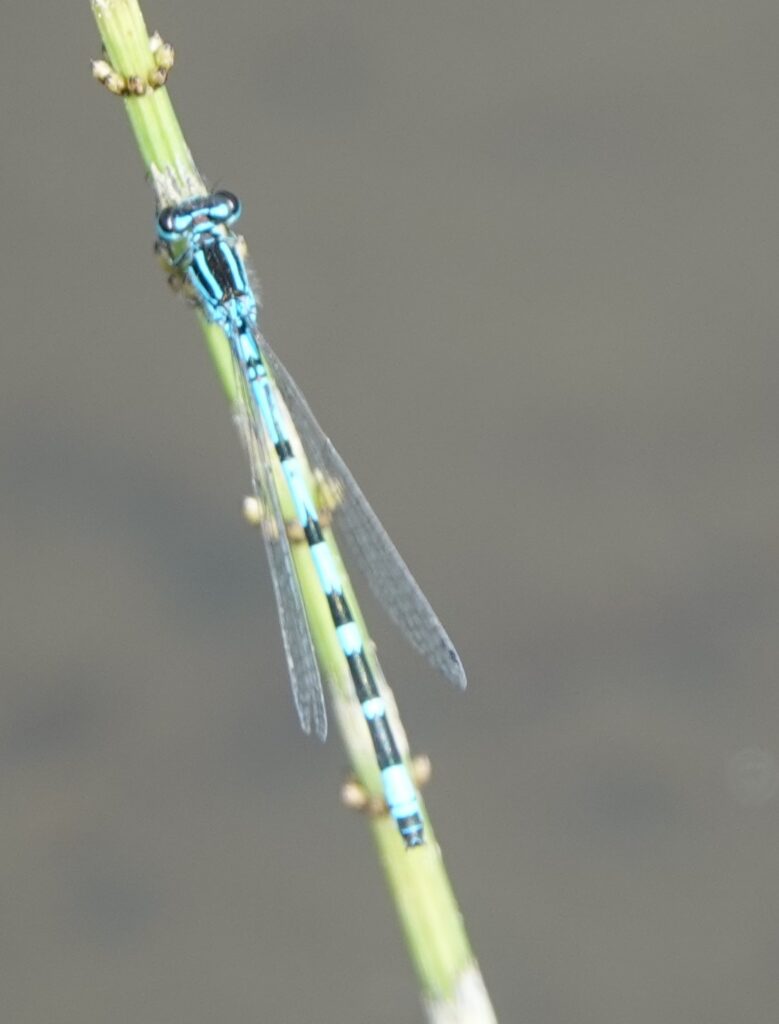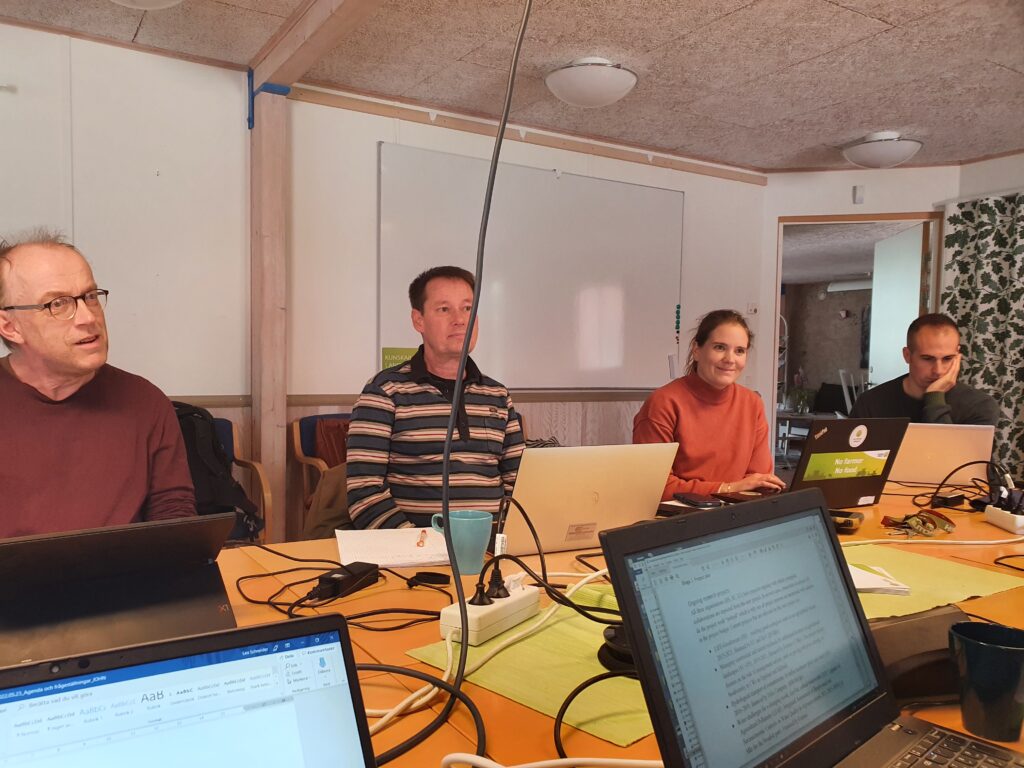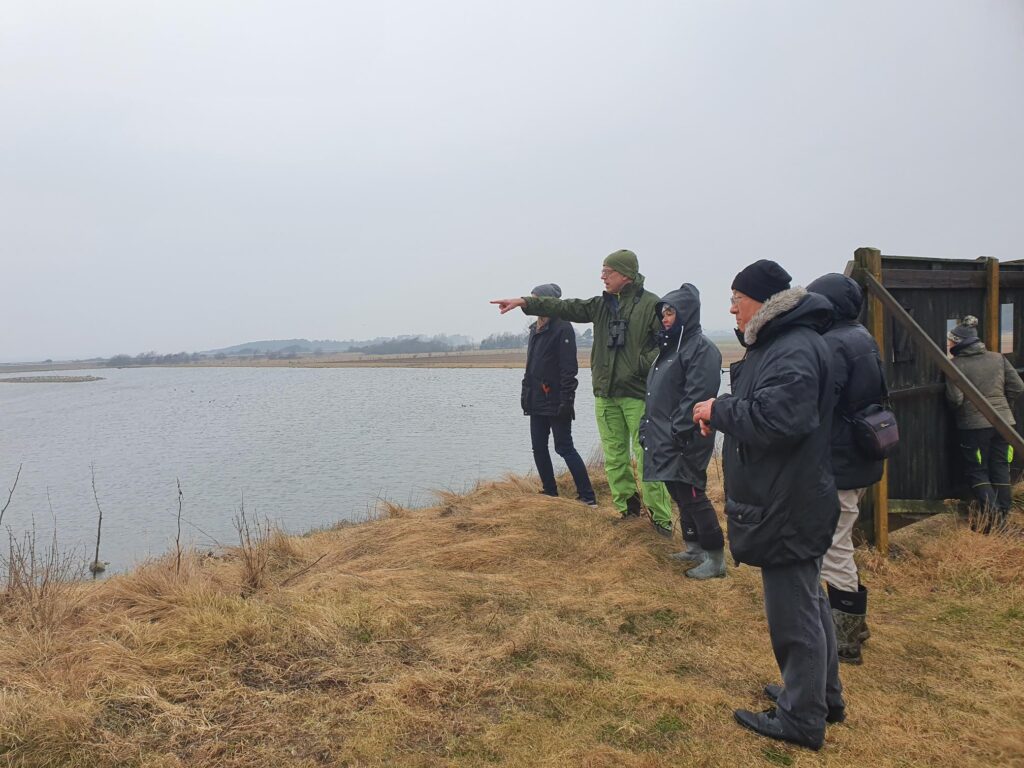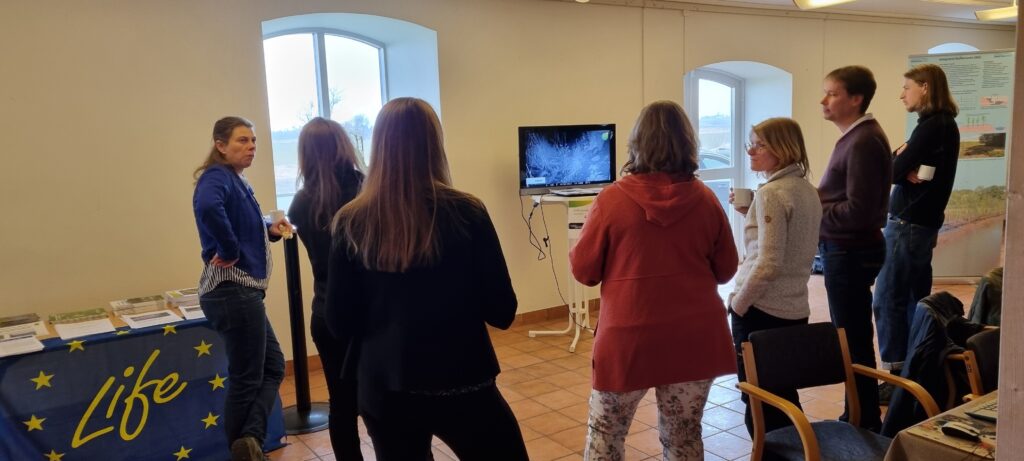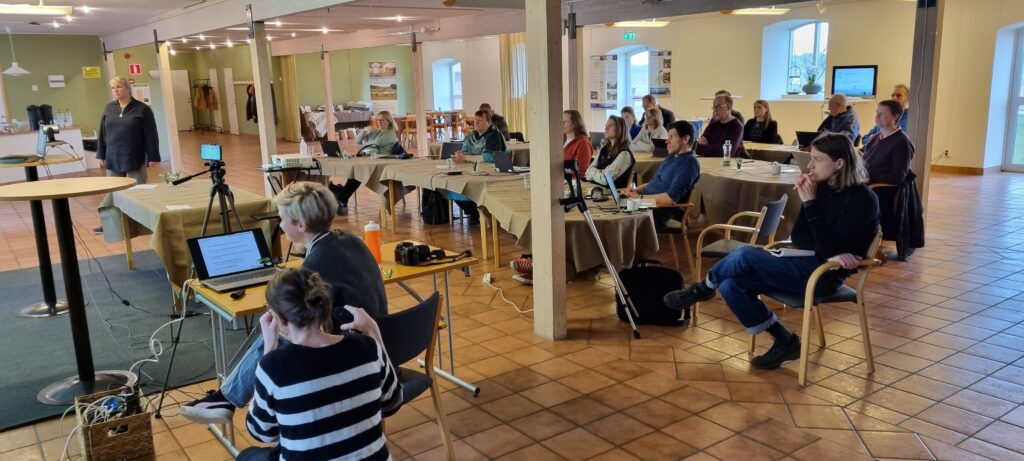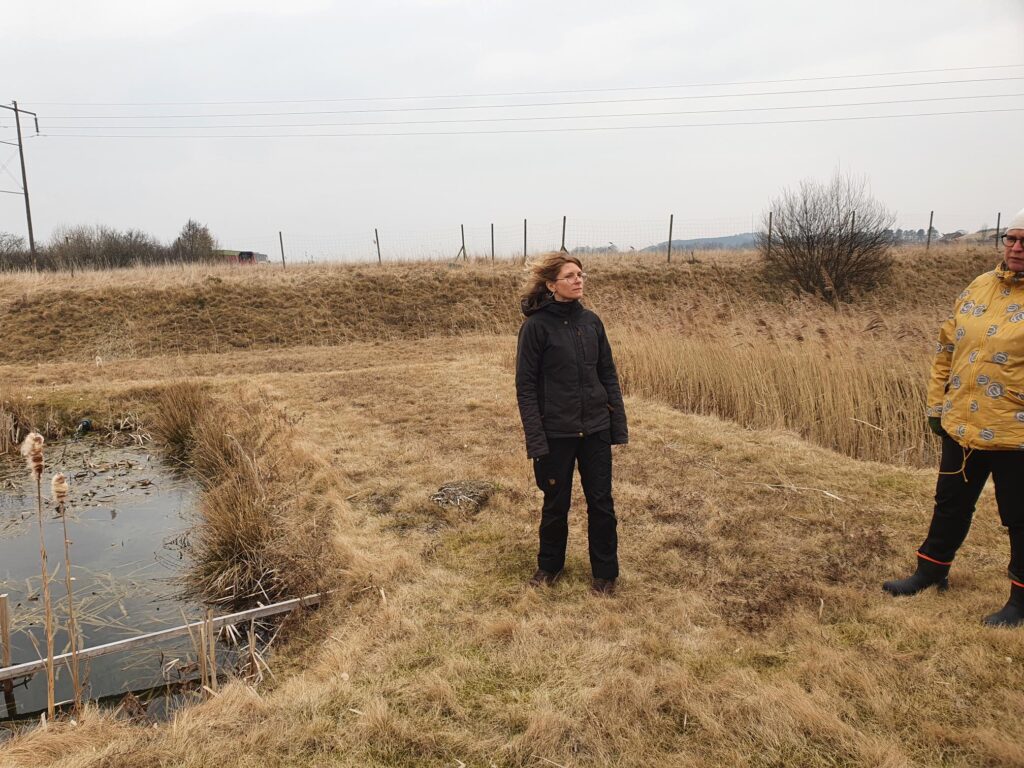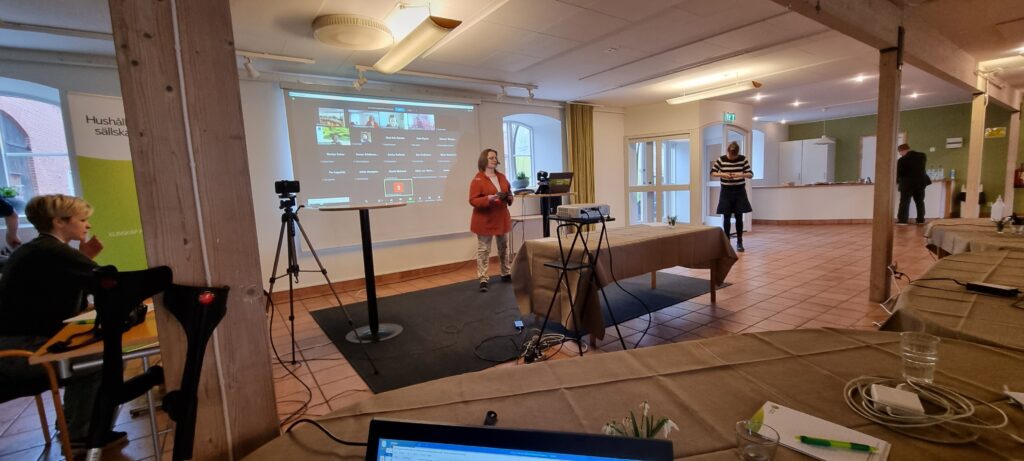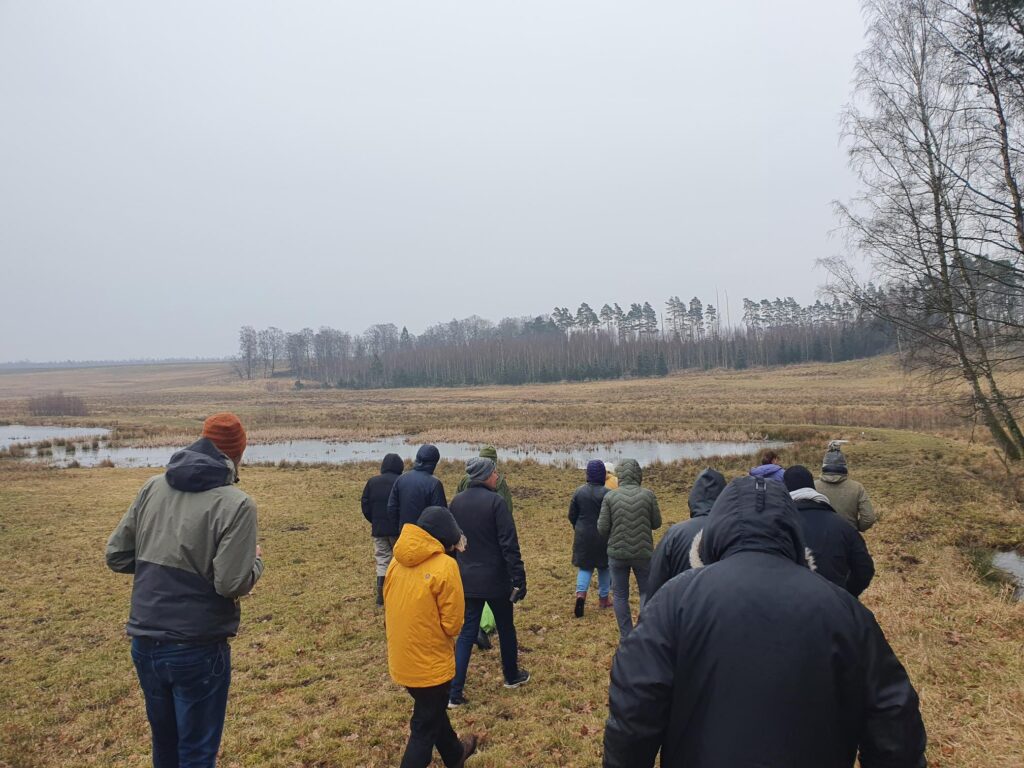Activities
Interview on the multifunctionality of wetlands
Peter and Jerker were interviewed in the ”VA-Pod” on the multifunctionality of wetlands. Listen to it here

End report Published!
The end report from the project ”Wetlands as buffers can now be downloaded from the Swedissh EPAs homepage.
Click here to find it: Report
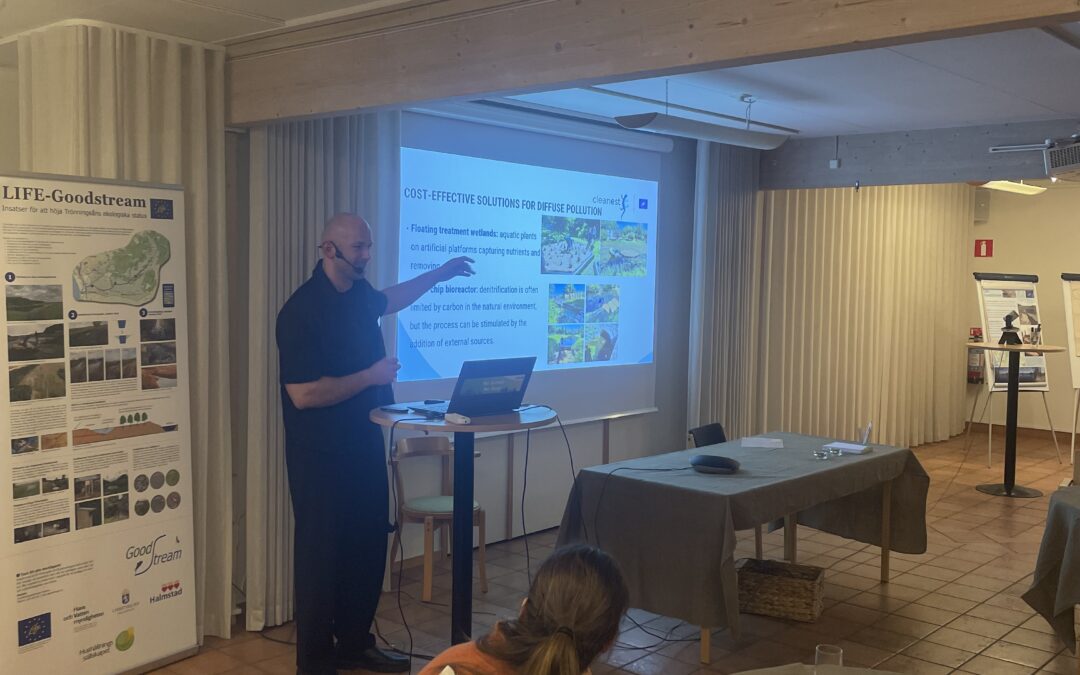
End conference!
The end conference (joint wiith the project LIFE-Goodstream) was very rewarding with lots of exiting presentations from the Buffer project as well as related research from Sweden as well as from Latvia and Estonia.
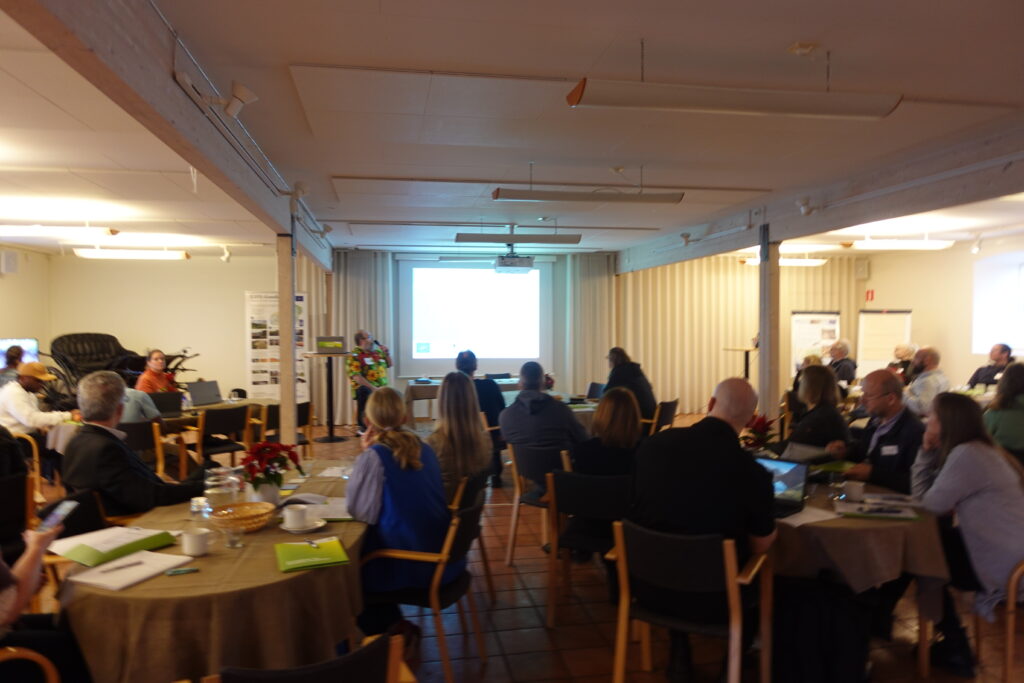
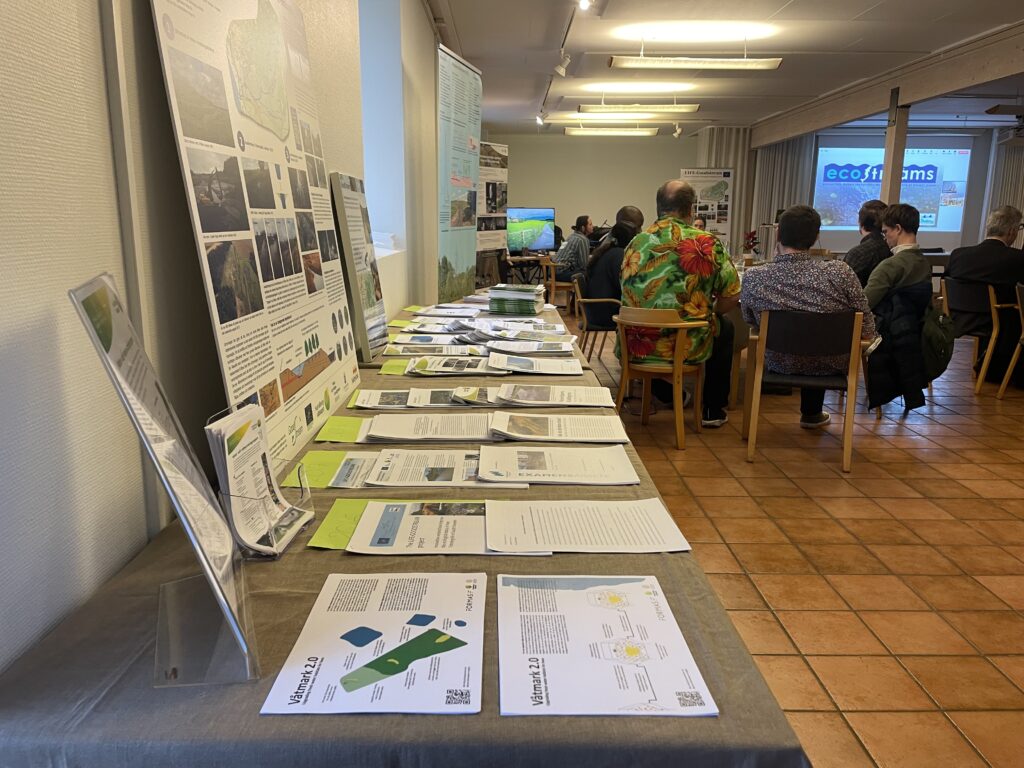
End Conference
We will arrange an joint end conference forLIFE-Goodstream, Wetlands as buffers and Wetlands 2.0, the 14-15 of December 2023. Feel free to register at John.strand@hushallningssallskapet.se The agenda can be viewed here.
Dragonfly studies including eDNA – field work now finished
Now all field work is done in our study of how dragonfly larvae (Odonata) are affected by fish presence and how adults are affected by wetland properties, particularly the immediate surrounding areas. Three years of survey of adult dragonflies, two separate surveys of larvae and lastly this year sampling for eDNA are done, and now we start with the data analyses. This is a colaboration with Göran Sahlén at Halmstad University.

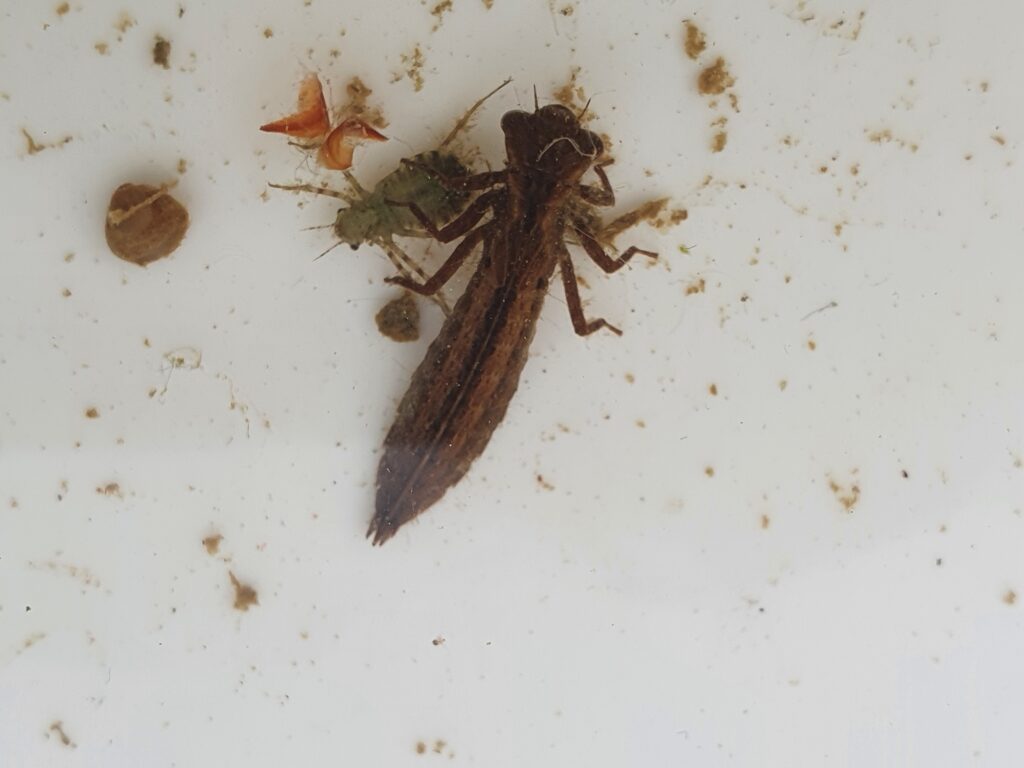
A popular science publication as a result of project surveys
The data from the surveys of dragonflies in the project was, together with data from the project LIFE-Goodstream, compiled into a guidebook to the public and to the landowners. The aim is to raise awareness of wetlands and their biodiversity by focusing on dragonflies which are relativiely easy to study. The guidebook (80 pages) show all species recorded in Halmstad and give help on how to study dragonflies and include maps to 12 different sites that are good for ”dragonly hunting”. The book can also be downloades as a pdf via the link: Trollsländor i Halmstads kommun.
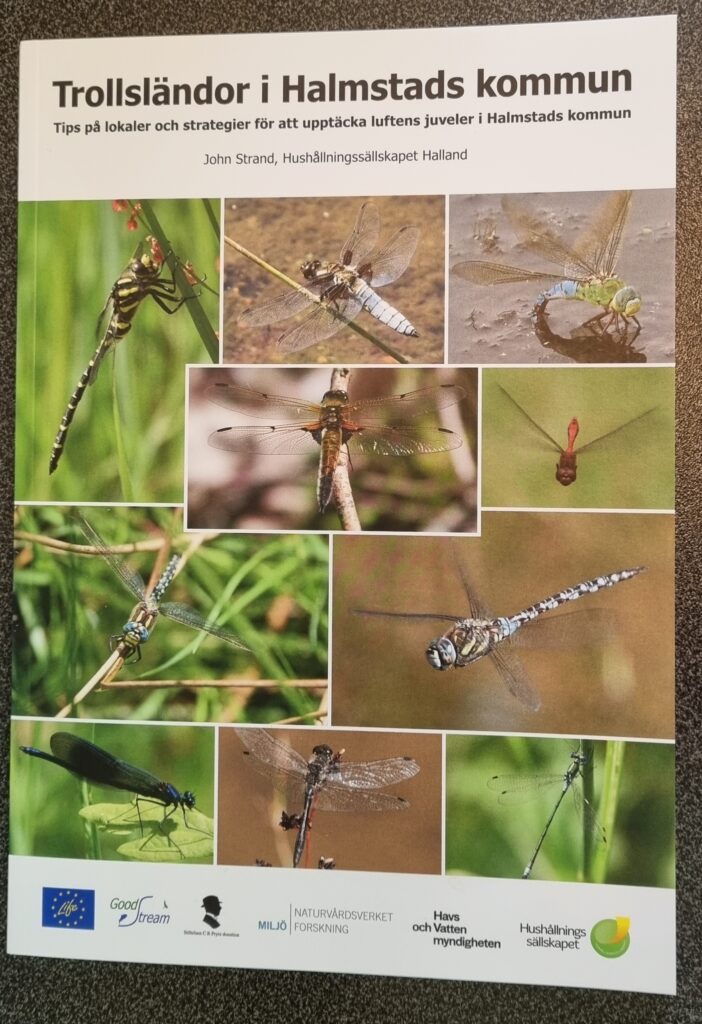
Two new thesis/degree projects in the project are now published
Tobias Engzell studied the water level fluctuations of constructed wetlands in relation to CW location, size and soil types. Read the paper by following the link in the title: ”Anlagda våtmarkers vattennivådynamik: Typmönster och dess samband med omgivande faktorer”
Ellen Nein studied drought effects on Diptera, Follow the link to read the paper: Hydrological drought effects on Diptera families and functional groups in constructed wetlands: Differences between sampling methods
Final arthropod sampling
Peter did a final sampling tour in Halland in the CWs that were included in the drought field experiment in 2022 to follow long-term effects on the arthropod communities. The weather was not helpful as can be seen in the last picture….



Two upcoming presentations of our work
The 31 of May, Peter will talk about multifunctionality of wetlands at ”Baltic Breakfast” (https://www.su.se/stockholms-universitets-ostersjocentrum/policyverksamhet/baltic-breakfast#kommandebalticbreakfastolikav%C3%A5tmarkerkr%C3%A4vsf%C3%B6rattn%C3%A5olikam%C3%A5l). It can also be viewed after the event at the link above.
The 25-26 of May John will present some results from our project at a water conference at the Bolmen Research station https://forskningsstationbolmen.se/valkommen-till-vattenkonferensen/
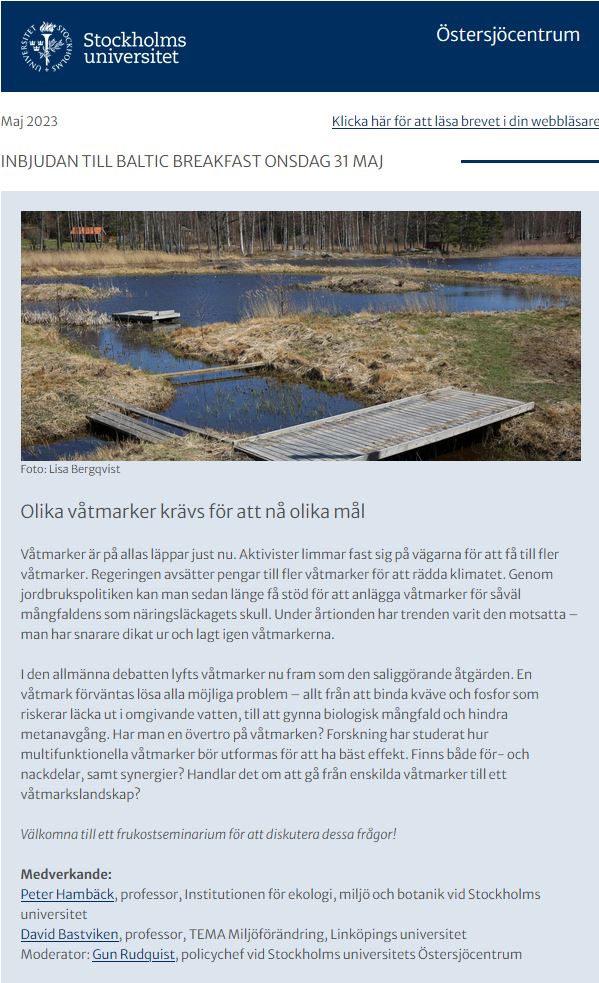
Our latest paper acknowledged at ”Global Water Forum”
Our paper on Tradeoffs and synergies in wetland multifunctionality, recently published in Science of the Total Environment, was displayed at the Global water forum, with a new short summary written by Peter Hambäck. It can be found here: https://globalwaterforum.org/2023/02/23/tradeoffs-and-synergies-in-wetland-multifunctionality-a-scaling-issue/
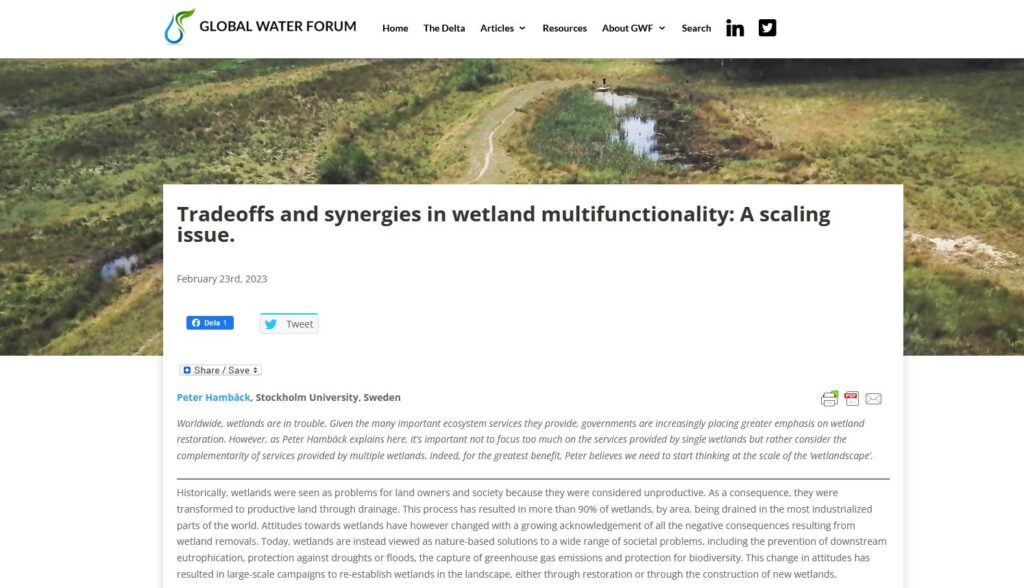
Water level monitoring is now terminated
This week we have started to collect the 112 water level meters from the wetlands after ca 2 years monitoring and data gathering. The bricks we used as anchors for the containers with the preassure sensors turned out to be good spots for crayfish.
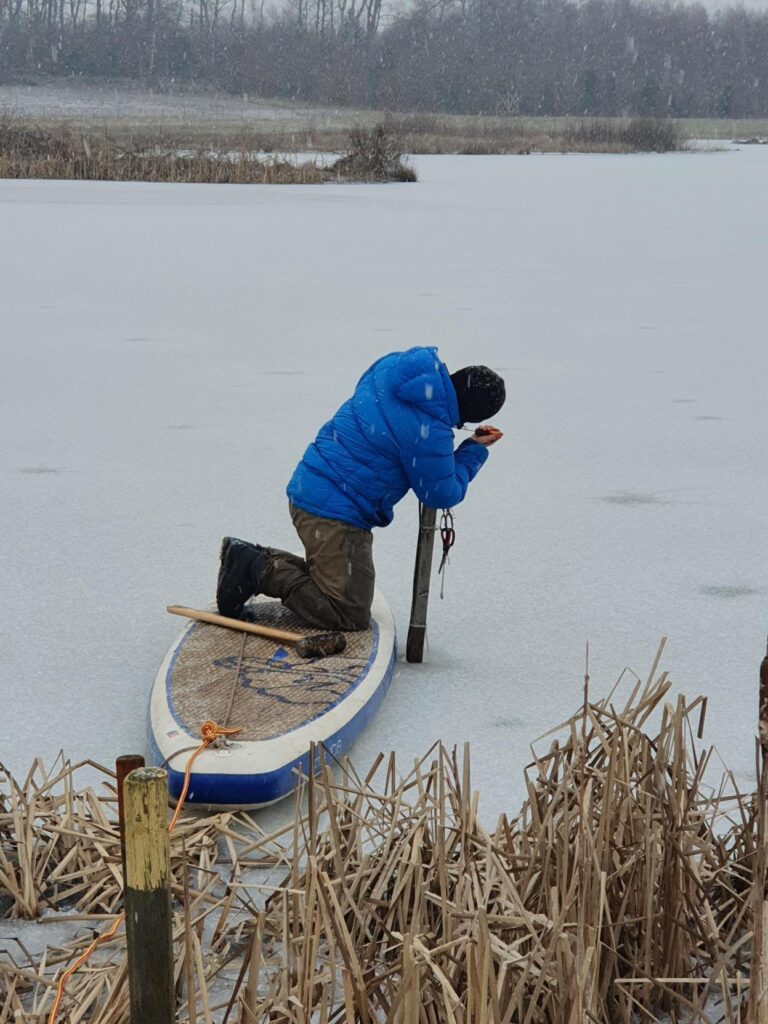
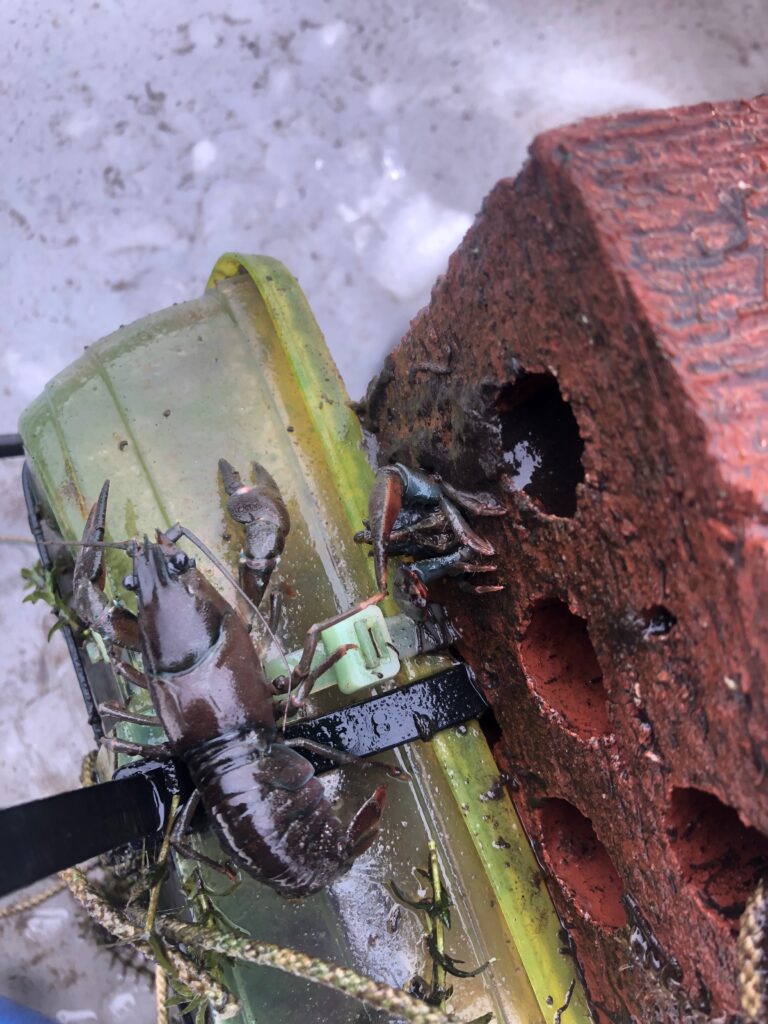
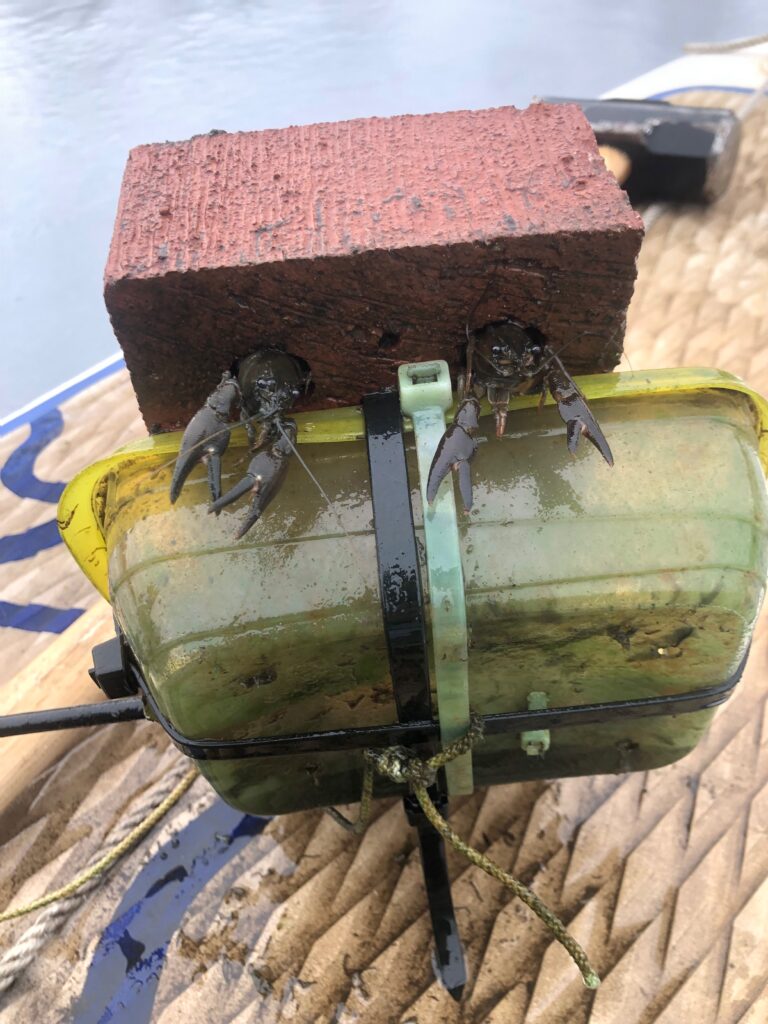
Today is International wetlands day!
We celebrate with a summer memory from last year and short movie from some of the wetlands, It can be seen here: https://fb.watch/irRLn3uxyr/

Paper submitted
Today we submitted a paper to ”Svensk Botanisk Tidskrift” (Swedish Botanical Journal) on the method (Stand up paddle, GIS-transects) and results from our survey of submersed vegetation in the constructed wetlands.
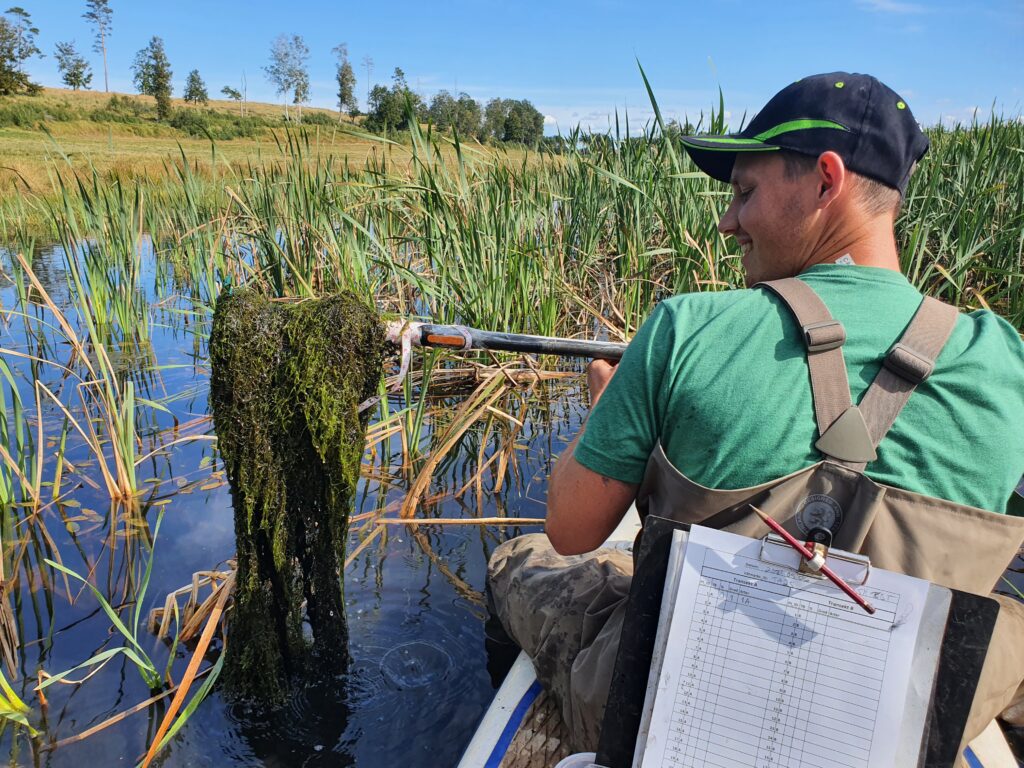

High flow data collection
The last weeks rain with subsequent high flows in our streams gave us a good opertunity to get data on high-flow situations, which are rather difficult to pin-point in time since they are often shortleved. All 11 streams were surveyd during last week by Sofia, Lisa and Kalle. Below are tvp examples from the field work in Genevadsån and Trönningeån
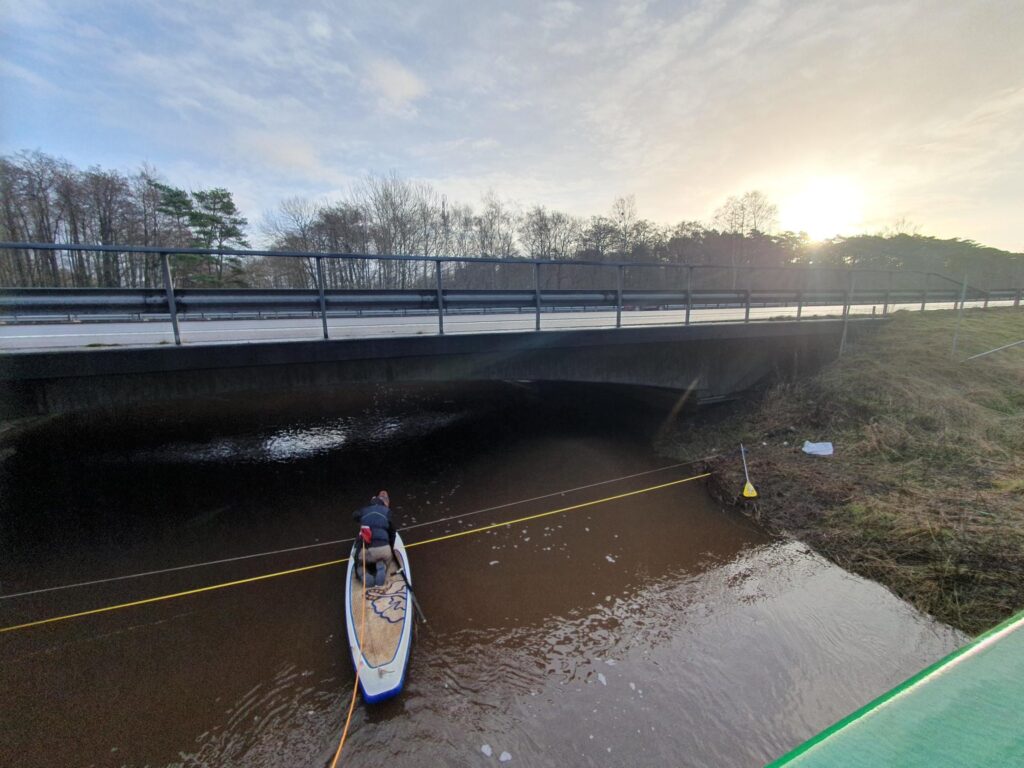
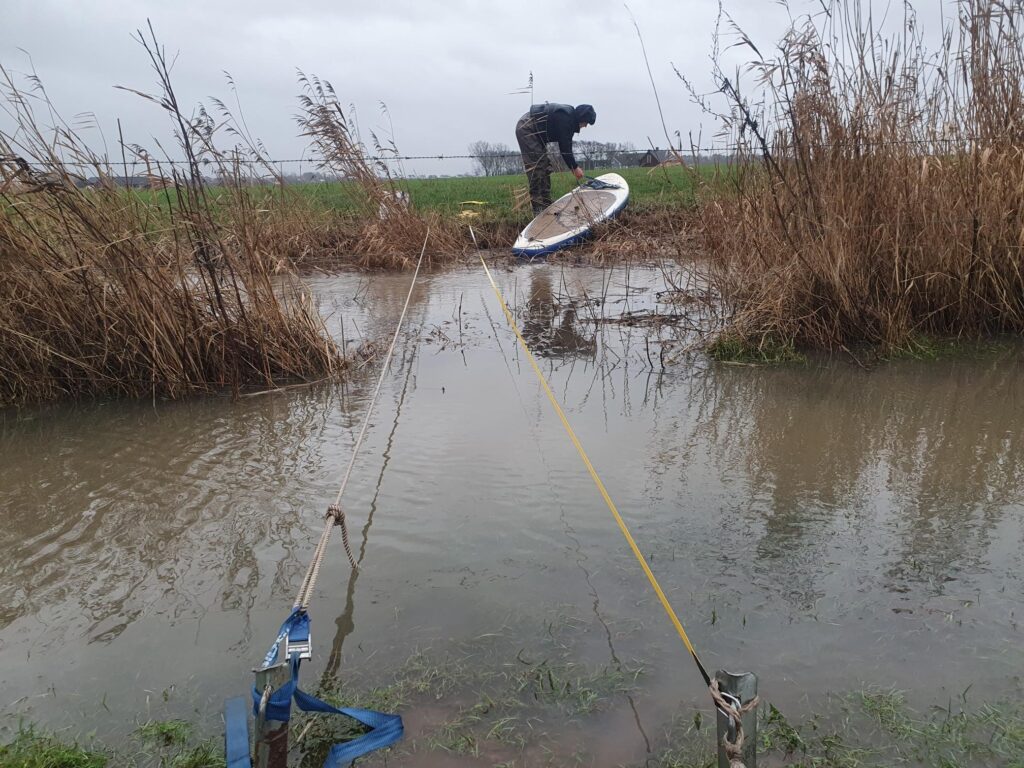
Newspaper article about the project published in several media
An article about the work by Peter and David at Stockholm University, on the invertebrates in the constructed wetlands in our project was published by TT and several newspapers. To read the article (in Swedish) follow one of the links:
https://www.ystadsallehanda.se/nyheter/spindeljakt-med-dammsugare-ger-svar-om-vatmarker-15644fe5/
https://www.svd.se/a/8J51p2/spindeljakt-med-dammsugare-ger-svar-om-vatmarker
https://www.aftonbladet.se/nyheter/a/O862kV/spindeljakt-med-dammsugare-ger-svar-om-vatmarker
New paper published!
Now our paper on Tradeoffs and synergies in wetland multifunctionality have been published in the journal Science of the total Environment. It is a joint effort by several researchers in different fields and was initiated at a conference and workshop in Stockholm in October 2021 (se post further down for more details on that). It can be found as full text pdf here.
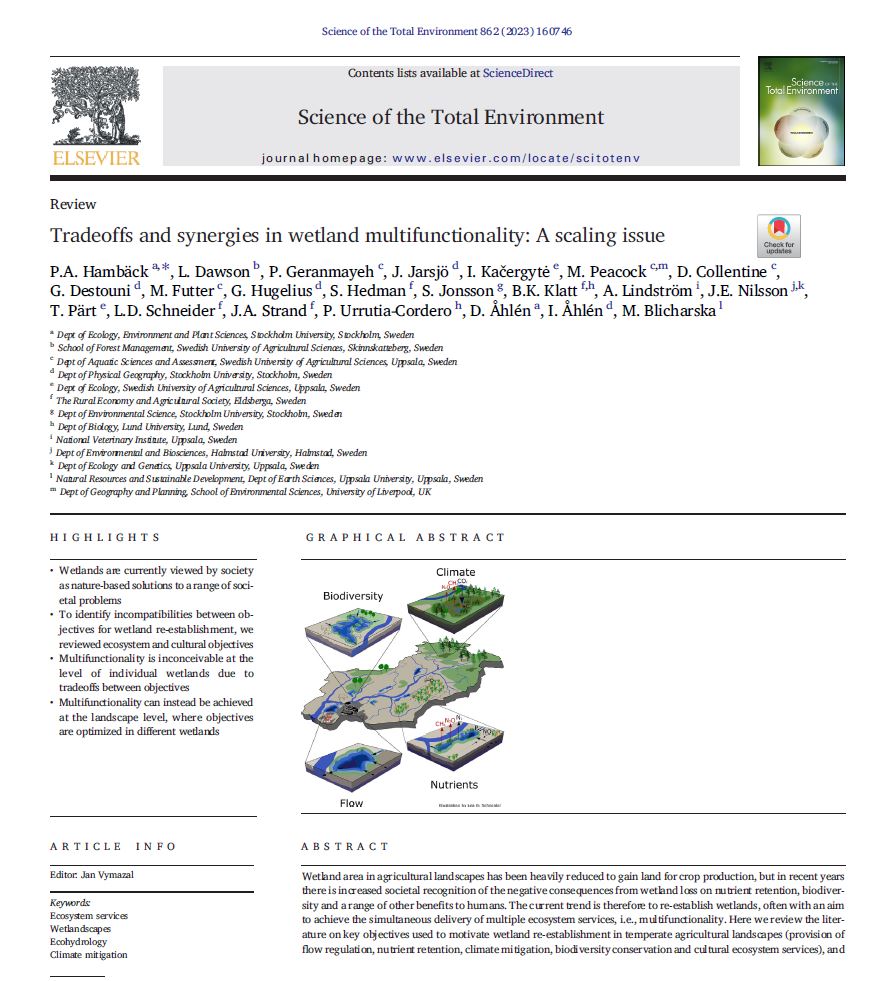
Project meeting at Stockholm University on data handling
We had a meeting in Stockholm the 23-25 November to discuss the hydrology and bathymetry data. The enormous amount of data generated from the water level meters and the bathymetry surveys needs to be processed in an efficient way to be able to evaluate. Now we have developed a strategy to incorporate the data into GIS for further handling and evaluation, and to produce bathymetry maps of all the wetlands.
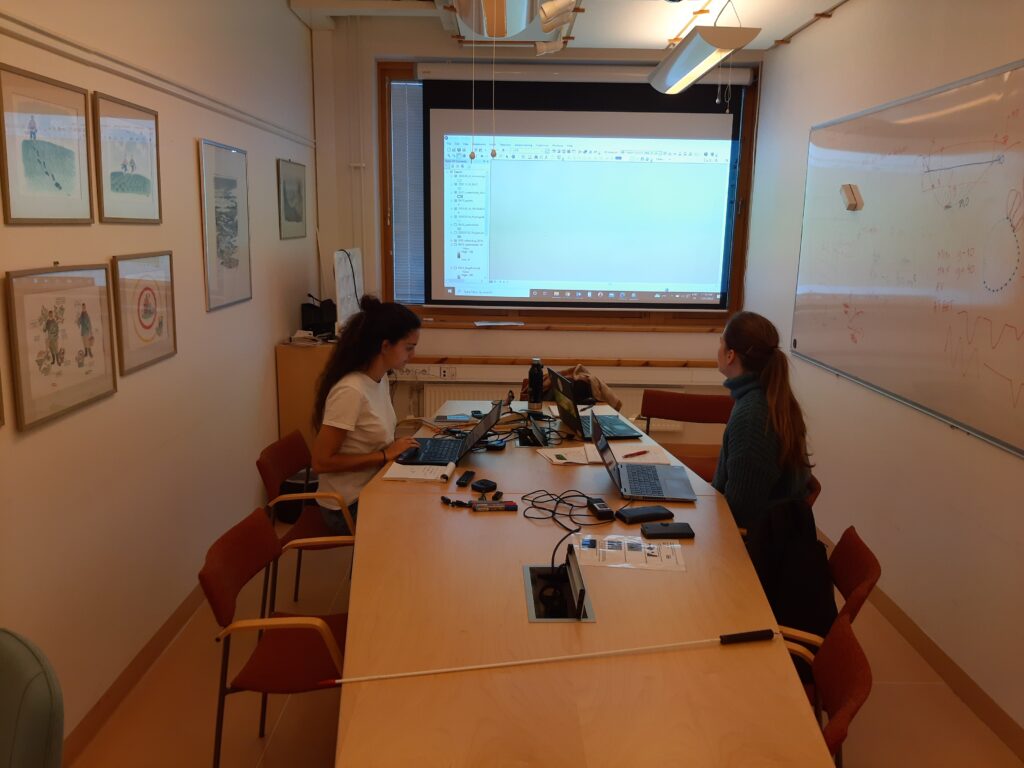
Meeting with landowners
The 26 of November, we arranged a combined Christmas dinner and workshop at Hushållningssällskapets workplace Lilla Böslid, Halland for all landowners in our projects, where we also presented results from our studies. Peter and David from Stockholm university gave talks about the invertebrate results and a citizen science project on mosquitoes that we are planning for next year. Ca 40 persons attended, and we got much positive feedback from the landowners.


No, more wetlands will not lead to malaria epidemics in Sweden!
The risk of getting back malaria in Sweden is sometimes suggested as a real concern in discussions regarding large state-funded efforts to re-create wetlands to mitigate climate change or reduce eutrophication and increase landscape biodiversity. The latest we have found regarding this is from a magazine published by Derome where a professor in history, Kalle Bäck, calls the risk of malaria a “terrible consequence that nature conservationists have missed”, see attached article (in Swedish). The problem is that he is completely wrong.
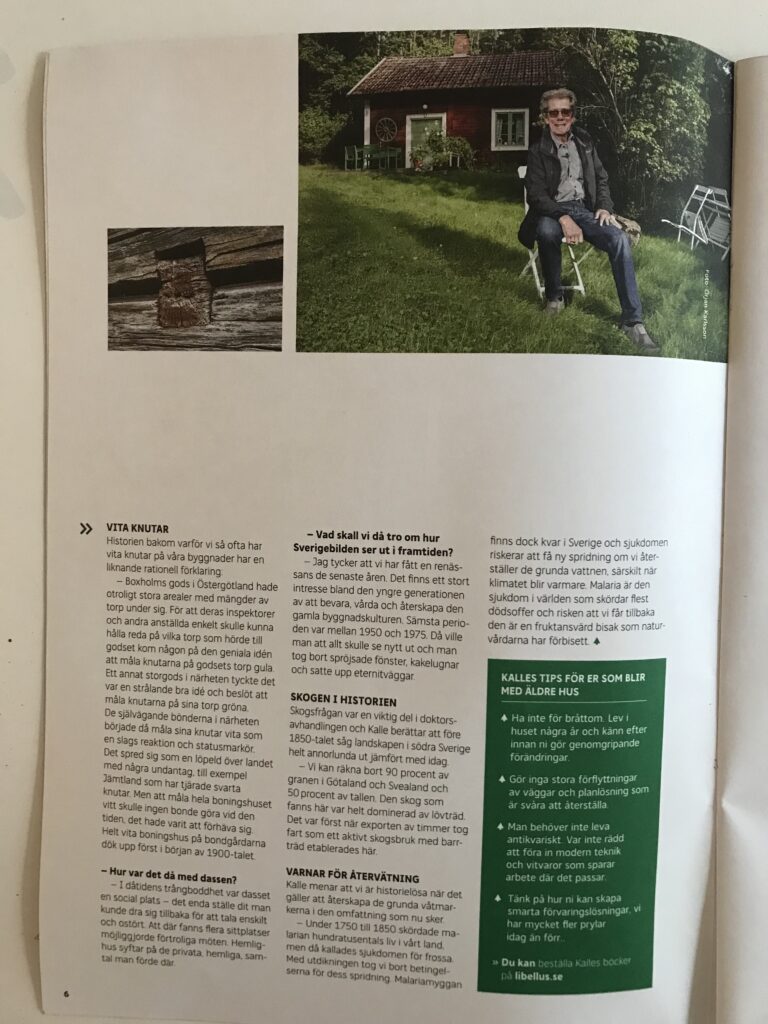
Anders Lindström at SVA, the National Veterinary Institute states:
“It is a strange statement about malaria that Kalle Bäck makes. Firstly, it can be stated that the malaria that existed in Sweden in the 18th and 19th centuries was caused by Plasmodium vivax. The parasite that Bäck refers to as causing the most deaths in the world is Plasmodium falciparum, that is, a completely different species. P. falciparum has never been found in northern Europe because it is too cold here for the parasite to develop in the mosquitoes. Plasmodium vivax can certainly also kill infected humans, but to a much lesser degree. During the period 1749 – 1820 an average of 1045 people died per year from malaria in Sweden. The disease was endemic and common along the coast from Blekinge up to Ångermanland and around Mälaren and Vänern. When there were epidemic outbreaks, it appeared all over southern Sweden.
The species of malaria mosquitoes responsible for the spread of malaria parasites overwinter as fully grown female mosquitoes. You can still visit almost any stable attic and find malaria mosquitoes. The dredging of wetlands certainly reduced the population of malaria mosquitoes, but as I said, the mosquitoes are still there and are not rare.
The fact that malaria disappeared in Sweden is considered mainly to be due to better housing standards. The mosquitoes thrive in dark and damp stables. When the housing standard was lower, there was no major difference between animal houses and residential houses. Often the animals were outdoors all year round. When the houses became warmer, brighter, cleaner and with lower humidity than before, the mosquitoes preferred to stay in the increasingly common animal stables. Since malaria mosquitoes almost always bite at night and there is food for them in the stables, fewer people were bitten and the transmission of malaria parasites decreased until it stopped.
The improved health care and the use of quinine also reduced malaria parasites. In order for us to bring back malaria in Sweden, it would be required that we get a significant part of the population infected by malaria parasites and at the same time bring back the 18th century housing standard and that the healthcare system fails to identify and treat malaria cases. “
A milestone is reached!
Now we have done the bathymetry measurements for all the wetlands! Sam and Sofia did the last one yesterday (the 111th). Great work!
Article about the Buffer project in ”Lantbrukets Affärer”

Project dissemination is on-going
We frequently have visits by landowners, authorities and researchers to workshops, meetings and excursions where we present our activities. Latest examples include a delegation from Latvia (IP LIFE-Goodwater) during a 3-day visit where we had good discussions and visited several of the Buffer project wetlands, and a presentation of the Buffer project by Sofia for participants at the WWF networking meeting in the Baltic Stewardship Initiative.

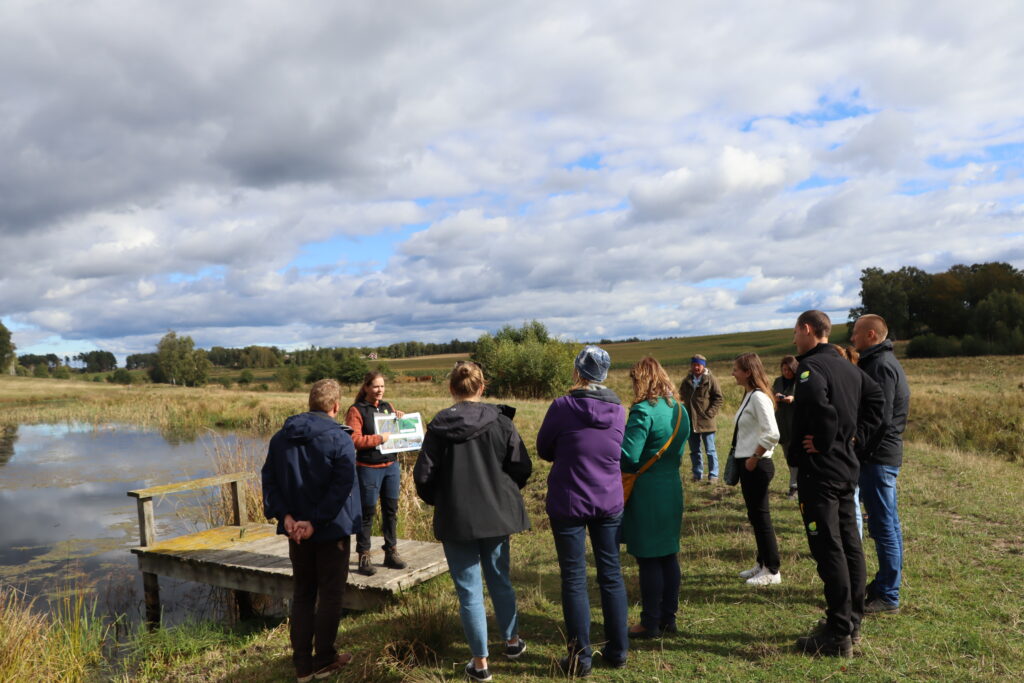
New arthropod sampling this week
This week Peter and assistant biology student Ellen Nein are doing a new sampling campaign in the 8 wetlands that were emptied this summer and the 8 controll wetlands. This follow-up sampling will also be repeated next year to study more long-term effects of droughts on the arthropod communities in the floodzones of wetlands.
Vegetations survey gave interesting botanical results
The vegetation surveys of ca 25 wetlands are now finished. In total ca 15 submersed species were found, including at least 4 Charophyte species. Among the more interesting findings were the Bryozoa Plumatella repens and 2 Nitella species that are on the Redlist (NT); N. gracilis and N. mucronata. Unfortunately we also found the invasive species Elodea nutallii in some wetlands. Below are some photos of some species. It is clear that constructed wetlands in the agricultural landscape can be important also for threathened and rare plant species, and the the occurrence of invasive species is frequent.
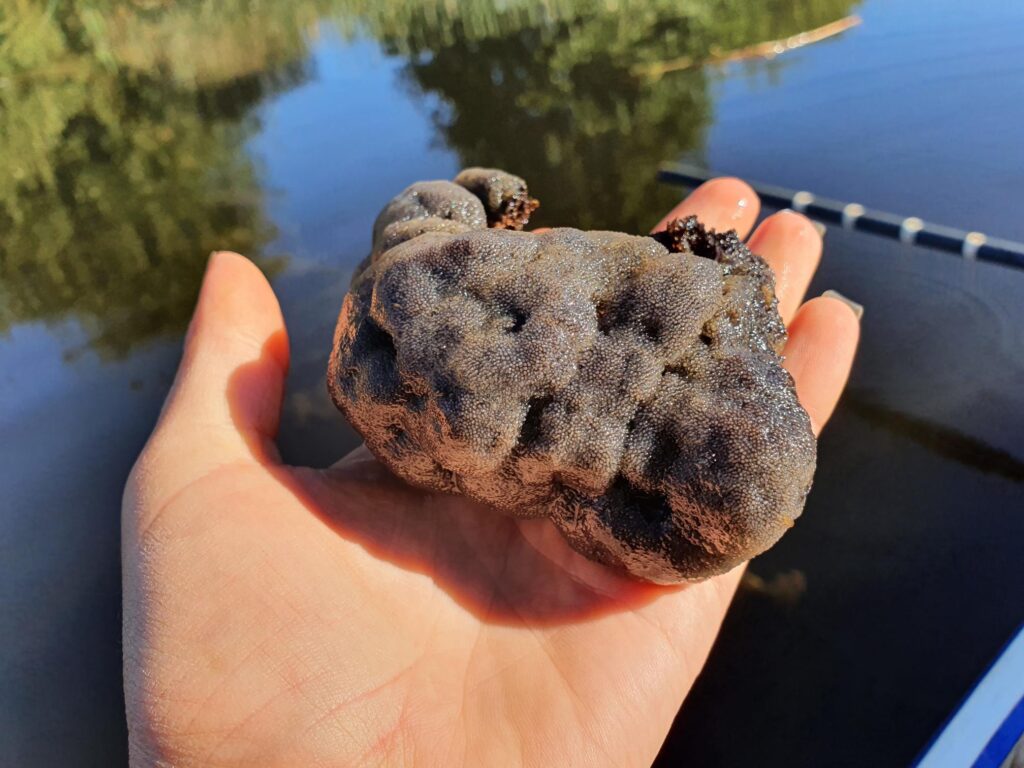
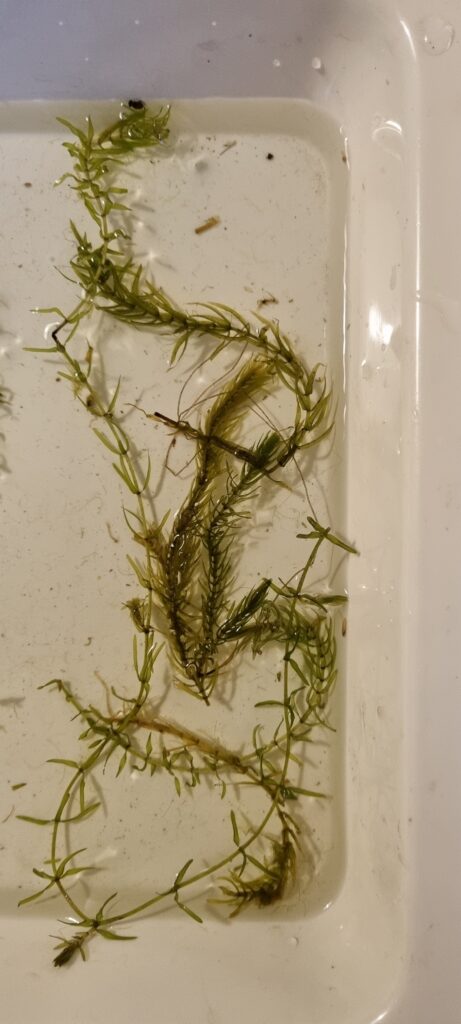
Vegetation surveys started
We have started with the surveys of submersed vegetation in the wetlands. This is also part of our networking with the Cyano bacteria project at Lund University run by Pablo Pablo Urrutia Cordero. The macrophytes are surveyed every 10 meters at 2 transects perpendicular to each other in each wetland. It is always interesting to see how the planning (first photo) holds up when it meets the reality of the field work (second photo)…So far so good, Our idea with two persons on the SUP where one handles the GPS to find the right sampling site and does steering and paddling, and one person doing the actual sampling seems to work.
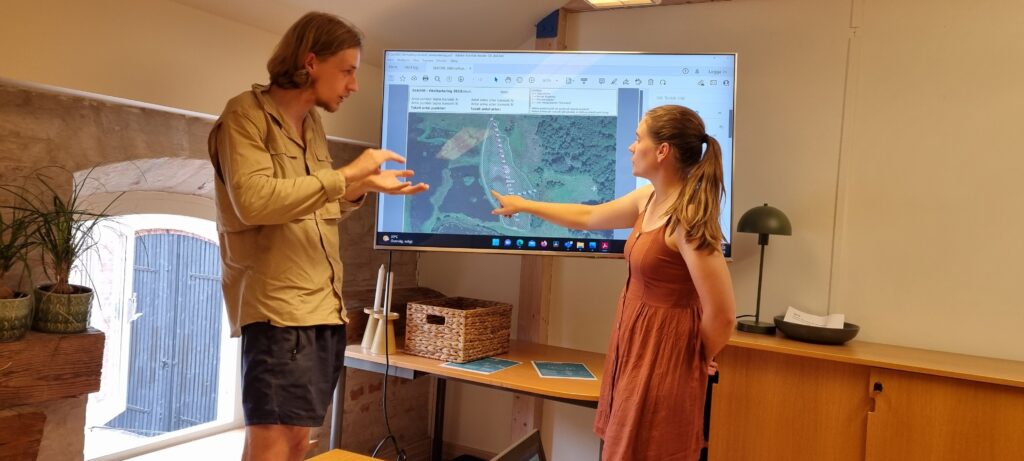
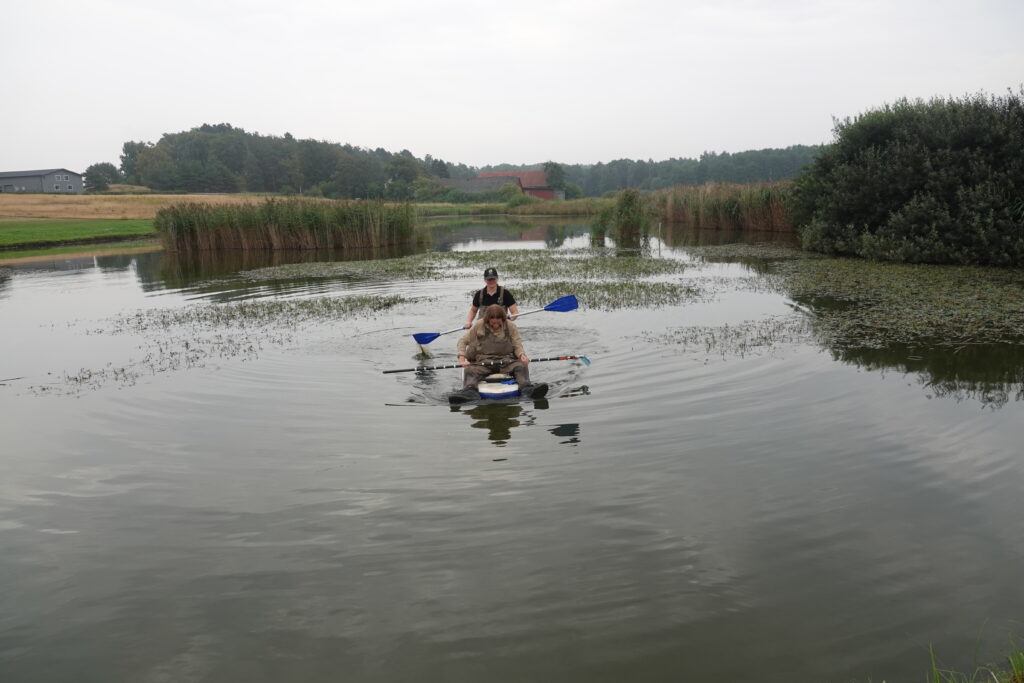
Presentation att SIL, Berlin the 7-10 of August
John had an online presentation at the 36th SIL conference in Berlin, Germany. The presentation focused on the project LIFE-Goodstream, but some results on arthropods in the flood zones and adult dragonflies from the Buffer project were also presented.
Drought experiment terminated
After David and Beata did the final arthropod sampling the first week in August we know have started to return the water levels to normal again. Below are some photos from David during the final sampling when the water tables were lowered.
Second sampling in the field experiment
This week David is in Halland to do the follow up-sampling in the field experiment where we have emptied 8 wetlands. He had help from an Intern from the biology course at Stockholm University, Beata Wolgers. Some maintanence of one of the Malais trap was also neccessary since the cattle can be a bit too curious.
Presentation at the XXVI International Congress of Entomology, Helsinki 17-22 July
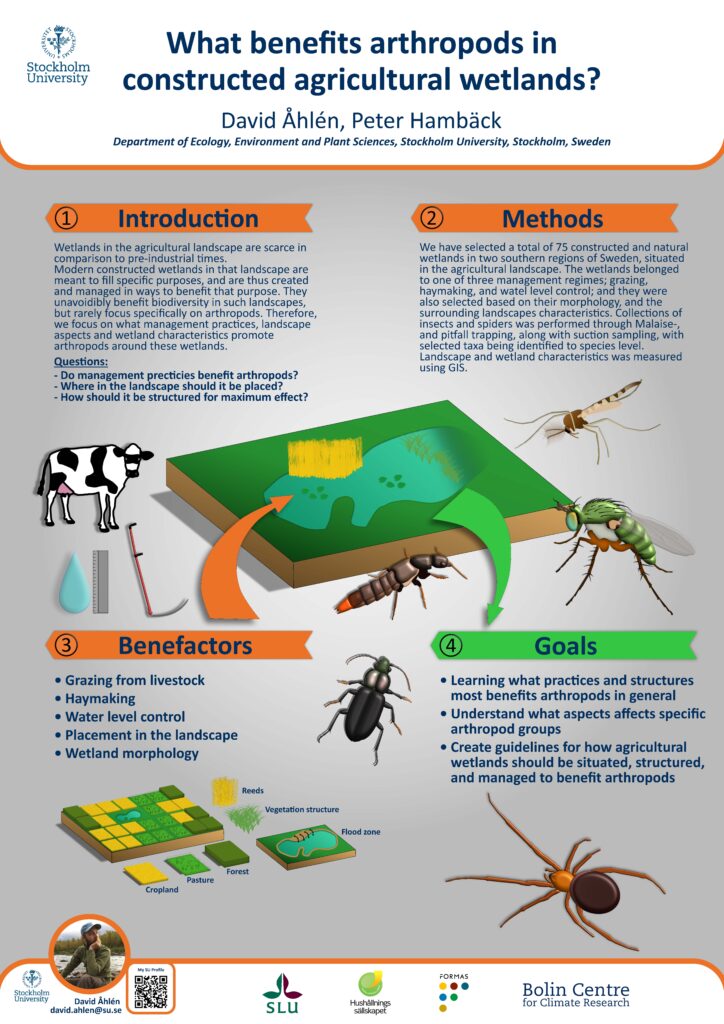
David presented the studies on arthropods in the constructed wetland flood zones at the entomology congress in Helsinki, Finland. The poster can be seen above.
Pulling the plug in a wetland
Here Sofia and Kalle do the emptying of one of the 8 wetlands. In some wetlands it is an easy process…
Field experiment started (water level manipulations)
This week we started a field experiment where we simulate drought by emptying (lowering the water table) some wetlands. We emptied 8 wetlands and have another 8 as controls. The purpose is to see the effect of drought on the arthropod communities at the shorelines of the wetlands. Peter did the ”pre-drought” sampling with Malaise traps, color bowls, suction sampling and pitfall traps. We also took photos of the wetlands with a drone before and after emptying. After a month of dry-out we will repeat the invertebrate sampling, and also repeat it next year to study long-term effects.
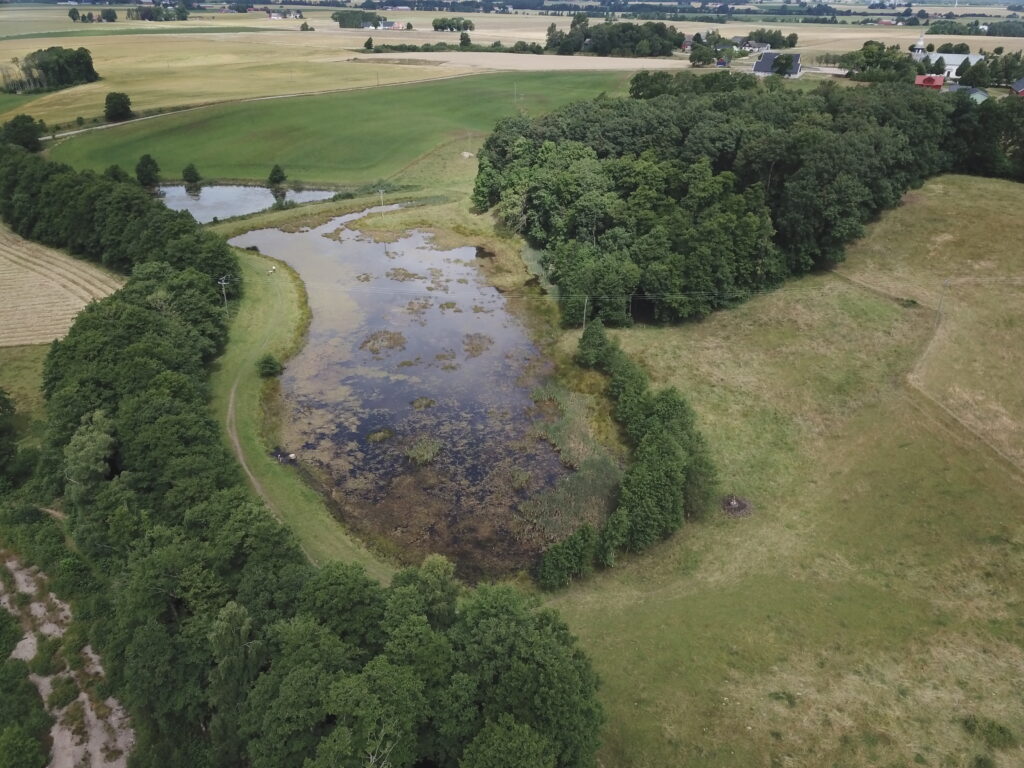
DCIM\100MEDIA\DJI_0225.JPG 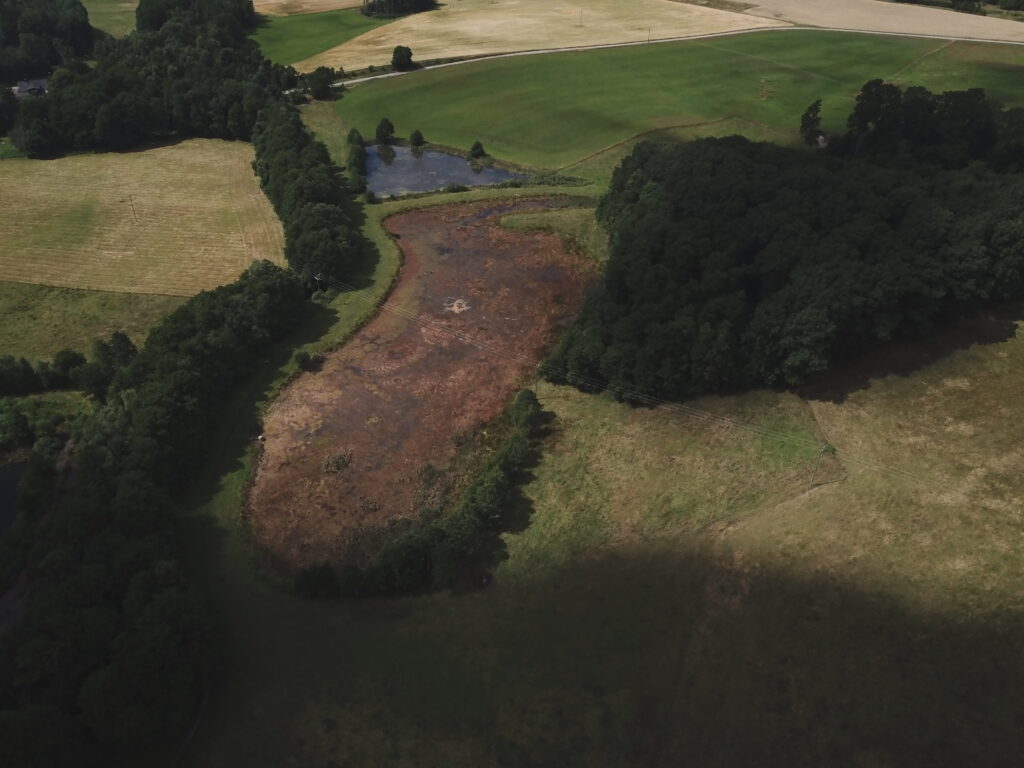
DCIM\100MEDIA\DJI_0048.JPG
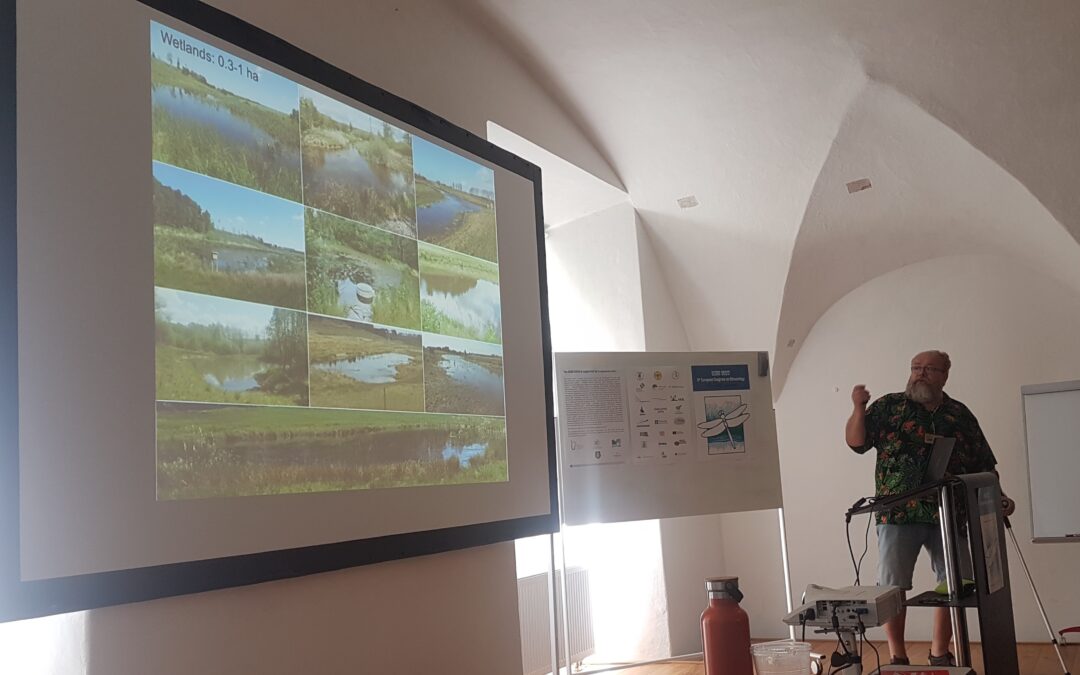
Presentation of Dragonfly data att ECOO 2022, Slovenia
John presented some data from the dragonfly surveys at ECOO 2022 (European Congress on Odonata) in Slovenia, the 26-30 of June. It was a nice conference with lots of discussions on dragonflies (of course). Dragonfly researchers from 25 countries participated and apart from interesting presentations we also were on a field trip to see slovenian dragonflies with specialities such as Coenagrion ornatum and Cordulegaster hero.
Project group meeting 26-27 of May
We had a 2-day project group meeting at Lilla Böslid, Halland where we discussed among other things; current available data, future sampling strategies and forthcoming papers from the projects.
Scientific paper published
The first paper from our surveys is now published. The title is: Insects and spiders in constructed wetlands: interesting findings from a systematic survey in Uppland and southern Halland, and is published in Entomologisk Tidskrift 143 (1–2): 47–66. It can be viewed and downloaded by clicking on the image below:
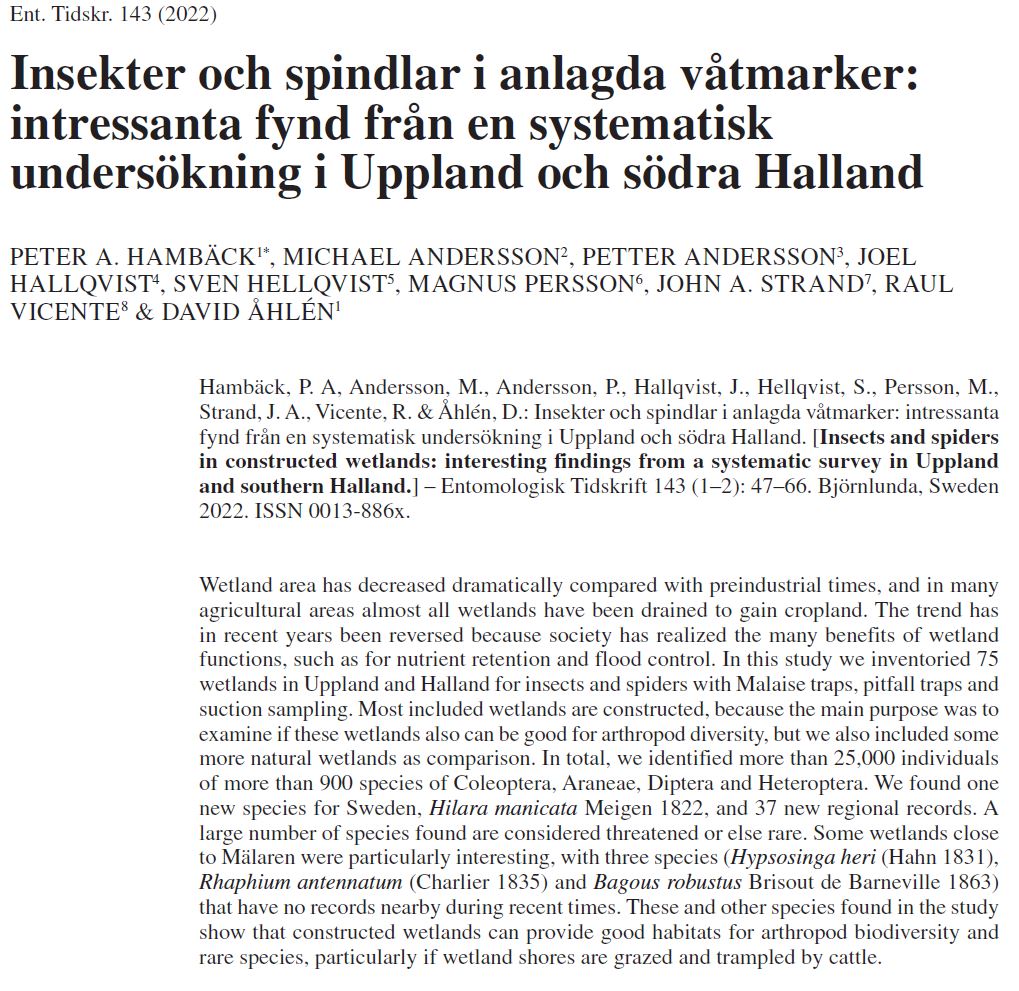
SEPA`s annual meeting on Wetland ecosystem services held at Halland
The annual meeting for the Swedish Environmental Protection Agency´s research grants on Wetland ecosystem services was held att Hushållningssällskapet Halland/LIFE-Goodstream the 17-18 of March. It was a hybrid meeting with ca 25 persons on site and ca 45 joining digitally. It was a very nice meeting (despite the weather during the field day) and we visited Halmstad University´s experimental set-up aswell as some of our sites in the Buffer project. All the 8 projects presented their work and we got oppertunities to good discussions and networking during the meeting.
Analyse of field experiment nest boxes
We have now started to analyze last summers field experiment with Osmia nest boxes in a hydrological gradient from the wetlands. We get data on nr of individuals, sex and occurence of dead or not developed individuals.


New Publication in Wetlands 2.0
This week a paper on trophic cascades involving fish, zooplankton, phytoplankton, algal mats, bumle bees and oil seed rape, in a mesocosm experiment conducted in the project, was publishen i OIKOS https://onlinelibrary.wiley.com/doi/full/10.1111/oik.09047
The results also have implications for the Buffer project regarding e.g. polinator behaviour during droughts and under different nutrient status of the wetlands.
Batymetri measurments continue
We continue with the batymetry measurements in the wetlands. Now we have done more than 50 % of the 112 wetlands.

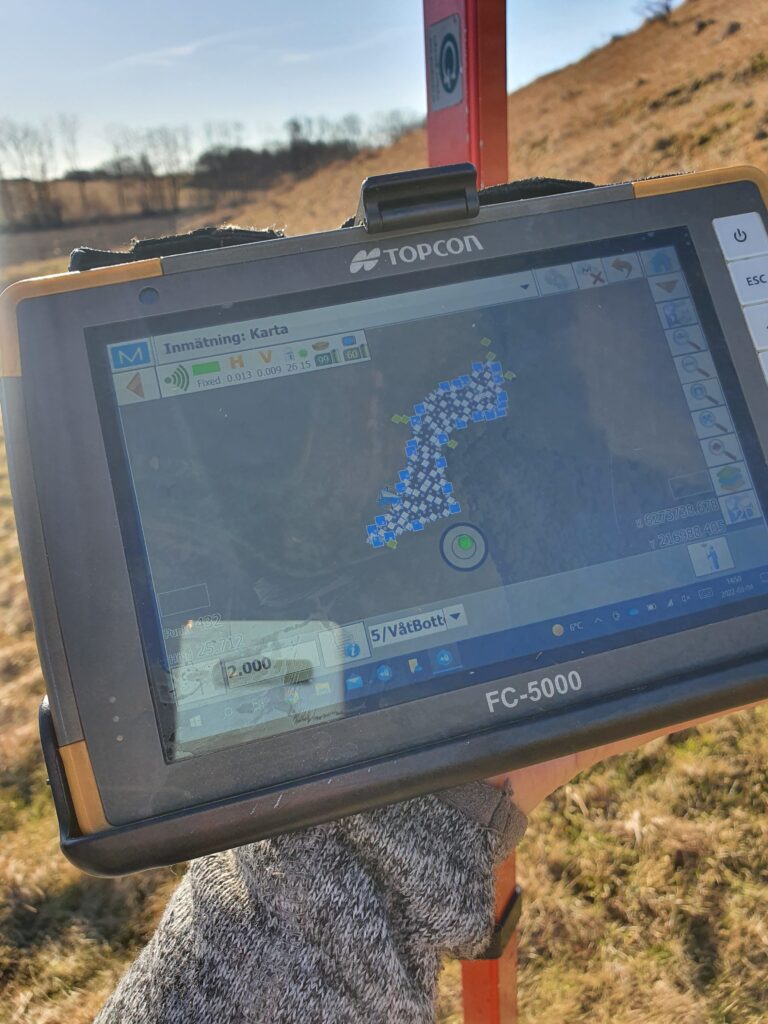
Our results on national radio (”Vetenskapsradion”)

Today, some results from our survey to landowners were in the ”science news” segment on Swedish national radio. It was the fact that the most common use of the constructed wetlands, by the landowners, was skating. Almost 40 % of the landowners we interviewed stated that they used the wetlands for skating. The short news segment can be heard here (in swedish): https://sverigesradio.se/artikel/bonder-aker-skridskor-i-vatmarkerna
The storm ”Malik” had large impact on the water levels in the streams.
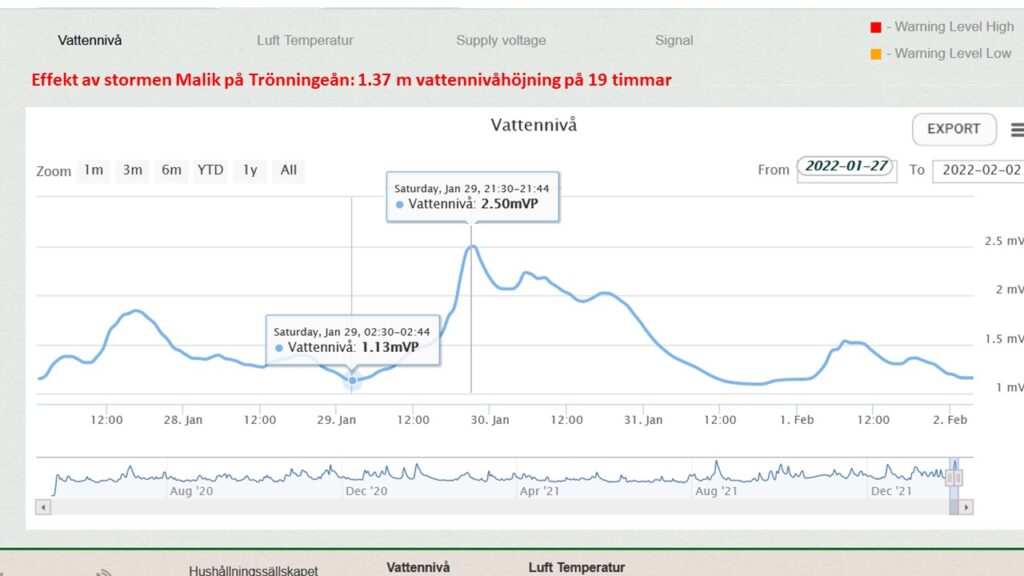
During the weekend the 29-30 of January the storm Malik hit the westcoast of Sweden. Thanks to our water level meters located in 11 streams, we could follow the effect the storm had on the water levels, hour for hour. The data from the stream Trönningeån shows that between 02.00 and 21.30 the 29th of January the water level increased with 1.37 m!
Popular scientific article submitted
Today we submitted a short article to inspire the public to explore wetland shorelines in order to experience the high biodiversity of insects and spiders. It is based on the findings in our projects which also are explained in the article. Results on beetles, spiders, flies, dragonflies and pollinators are presented. It will be published in ”Hallands Natur” (in Swedish).
Mainenance of water level meters continues…
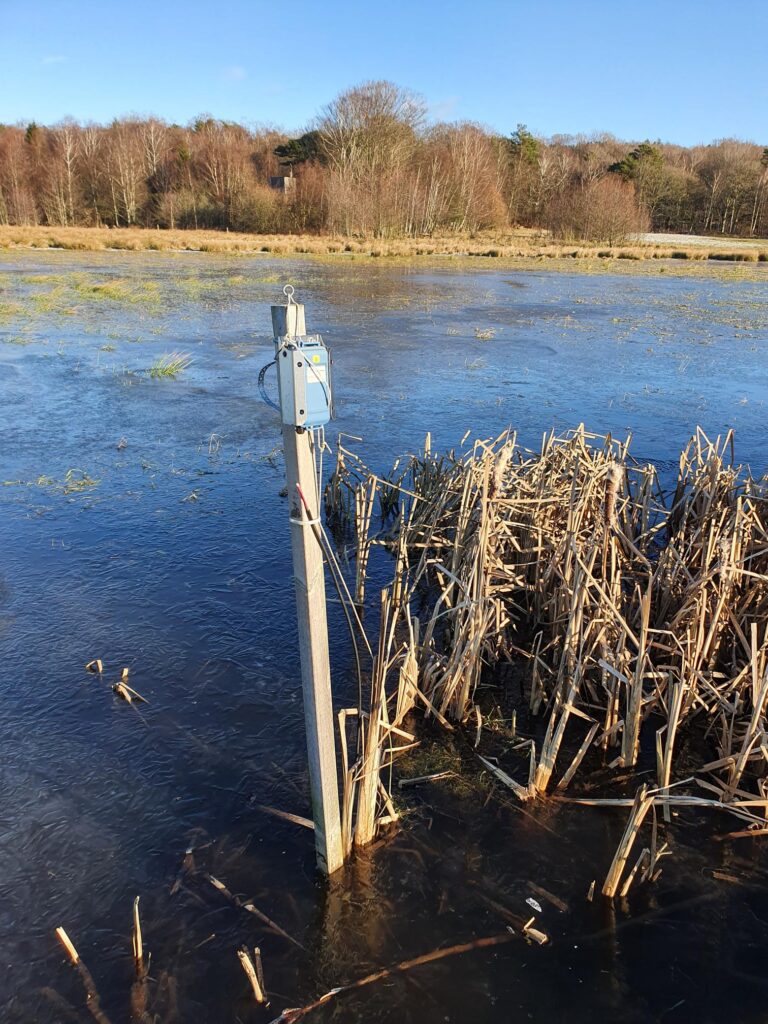
As always with electronic equipment permanently deployed in the field there is some wear and tear. Here is a meter where the cable has been disconected, possibly beacause of movements of the ice. Sofia and Sam exchange batteries and repair the ones that malfunction continously.
Paper accepted!
Today we got the news that our paper submitted to ”Entomologisk Tidskrift” has been been accepted, after a minor revision.
”Half-time” Thesis presentation by David Åhlén
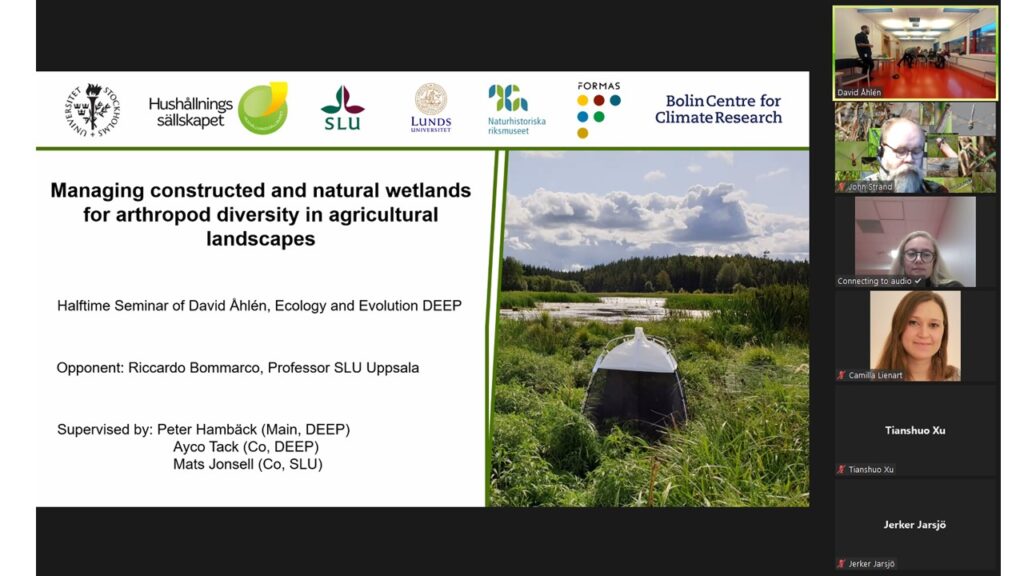
The 19 of November David Åhlén presented results from the Buffer project and the Management project as part of his ”half-time” seminar in his thesis-work at Stockholm University. Opponent was Professor Riccardo Bommarco, SLU. It was a combined live and zoom event and we got to hear interesting discussions on invertebrate food web dynamics at wetland shorelines/flood zones, and effect of management regimes on species abundance and distribution.
A paper on interesting findings from the biodiversity surveys of 2020-2021 has been submitted
Today we submitted the first scientific paper in the project. It is a compilation with commentaries on interesting findings from the biodiversity sampling. It was submitted to the Swedish Entomological Society´s Journal; ”Entomologisk tidskrift”. The title is: ”Insekter och spindlar i anlagda våtmarker: Intressanta fynd från en systematisk undersökning i Uppland och södra Halland” (Insects and spiders in constructed wetlands: Interesting findings from a systematic survey in Uppland and southern Halland).
Conference and work shop in Stockholm
The whole Biowetland project group attended a conference at Stockholm University (Multi-functional wetlands) the 27 of October and thereafter a 2-day workshop with ca 20 researchers discussing a joint paper on Constructed wetlands and synergies and trade-offs of wetland functions. A very good and rewarding 3-day event at Stockholm University and Tovetorp research station. Below are some photos from the conference and the workshop.
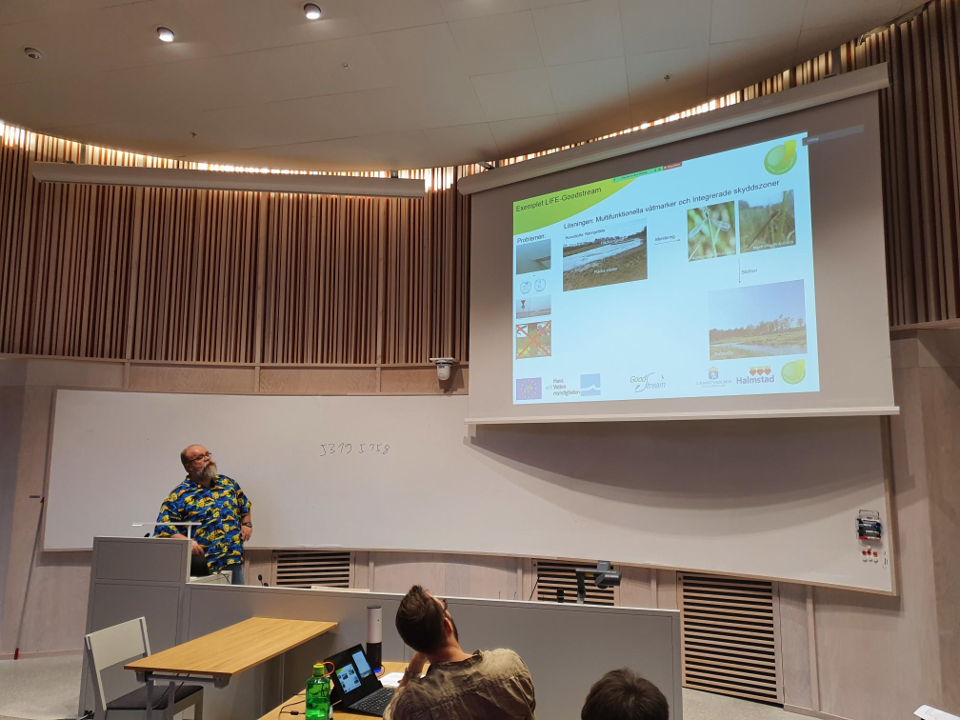
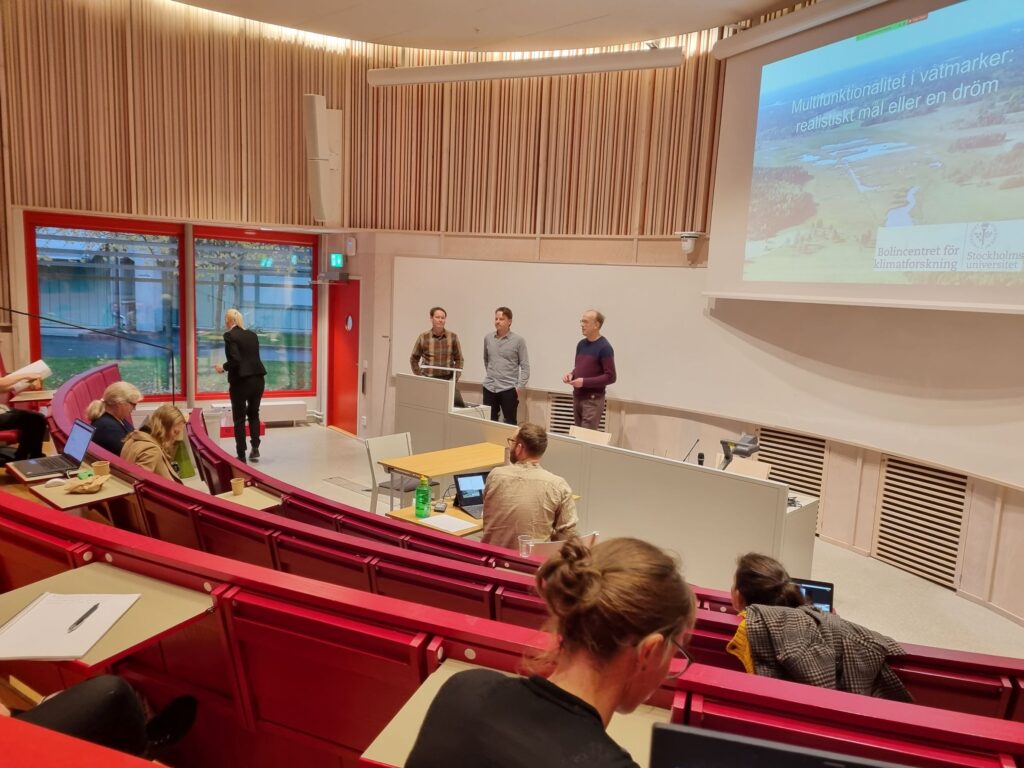
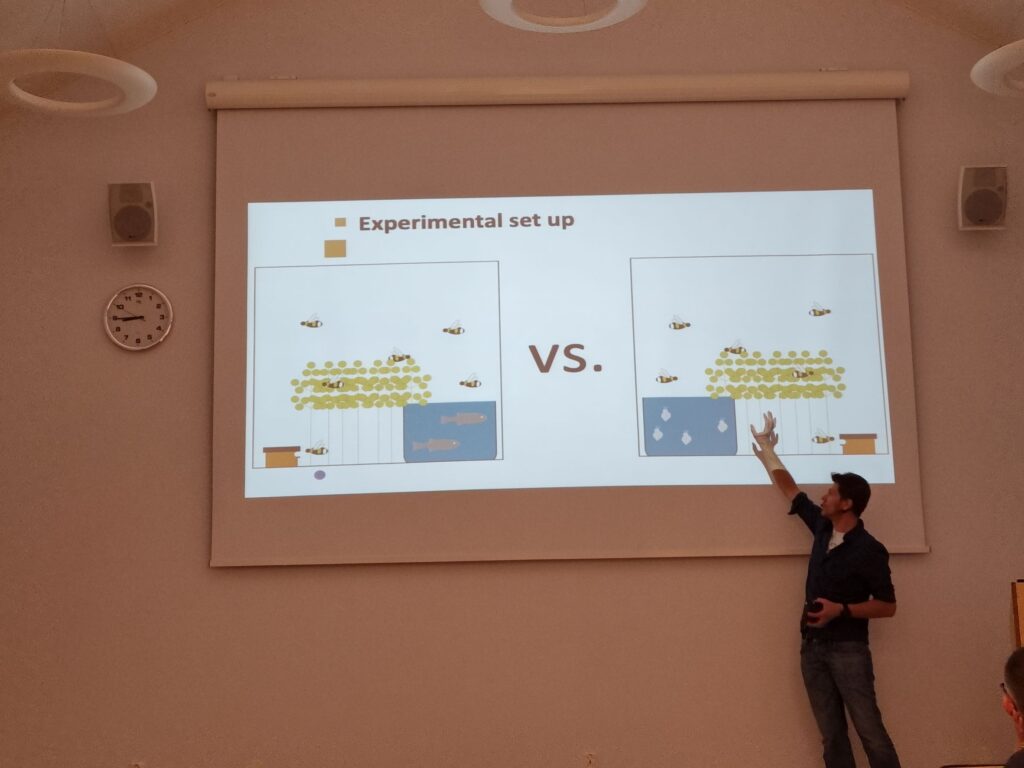

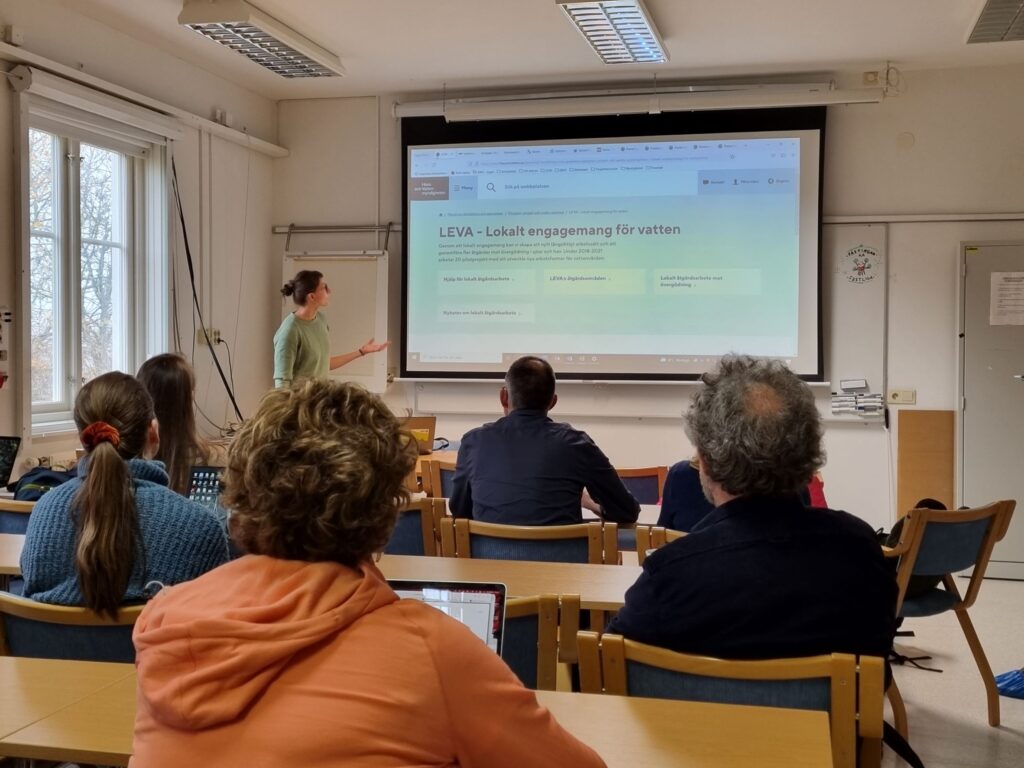
Maintenance of water level meters
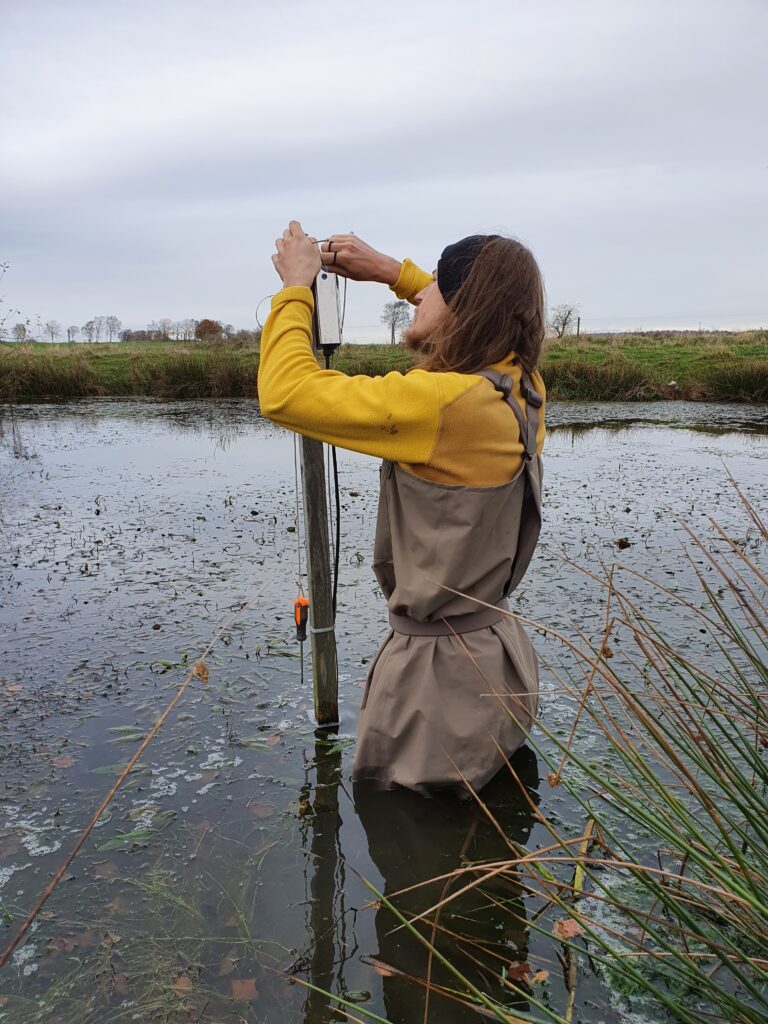
Some time must be spent on mainenance on the 125 water level meters. Here Sam changes batteries in one of them
Second sampling of invertebrates for 2021
Today David arrived in Halmstad for sampling with Malaise traps and pitfall traps in the 14 wetlands that we will empty next year. This sampling toghether with another sampling next year before emptying will serve as comparisons with samplings done after the lowering of the water levels.
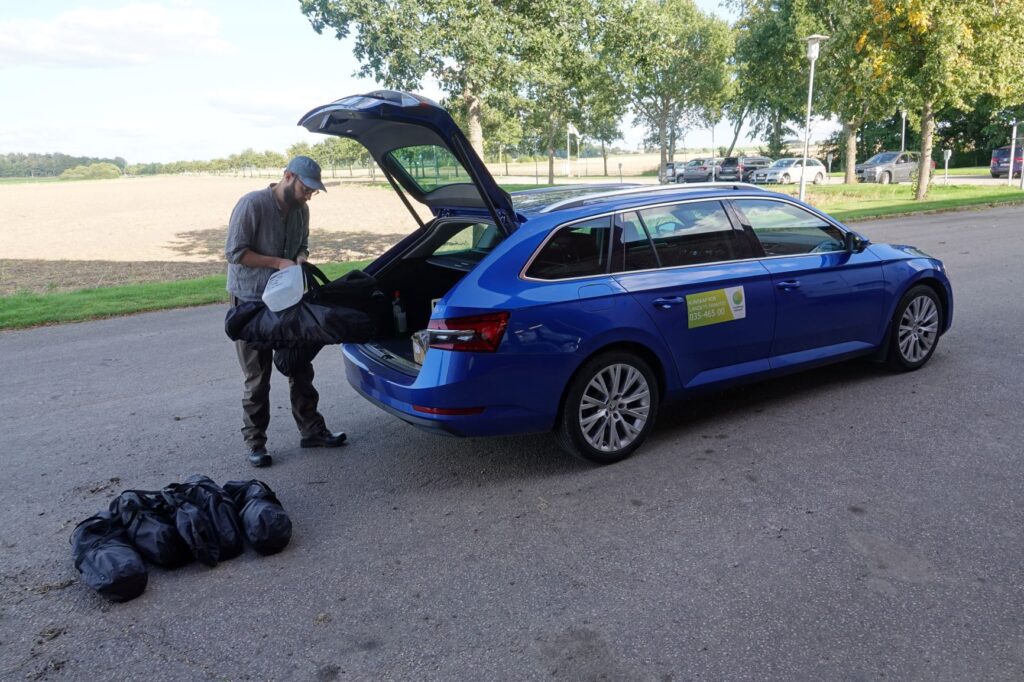
Filming of our project again
Today Johan and Joel from Heurgren Film AB spent a day in Halland to film our activities in the buffer project and also visiting researchers Pia and Joachim from projekt WetKit. The film is produced as part of project WetKit.
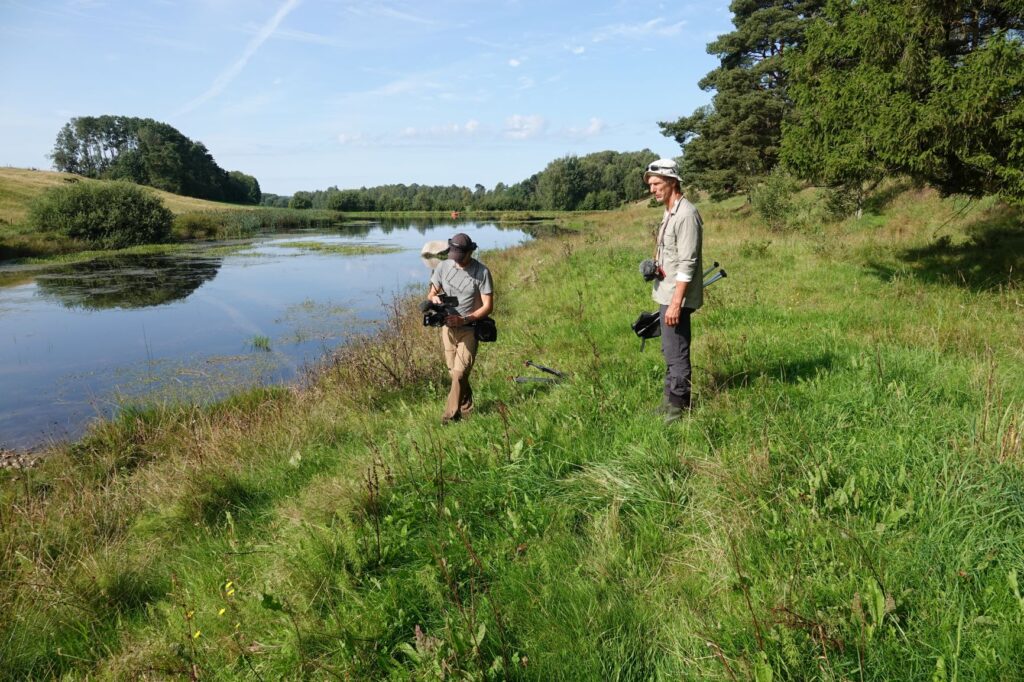
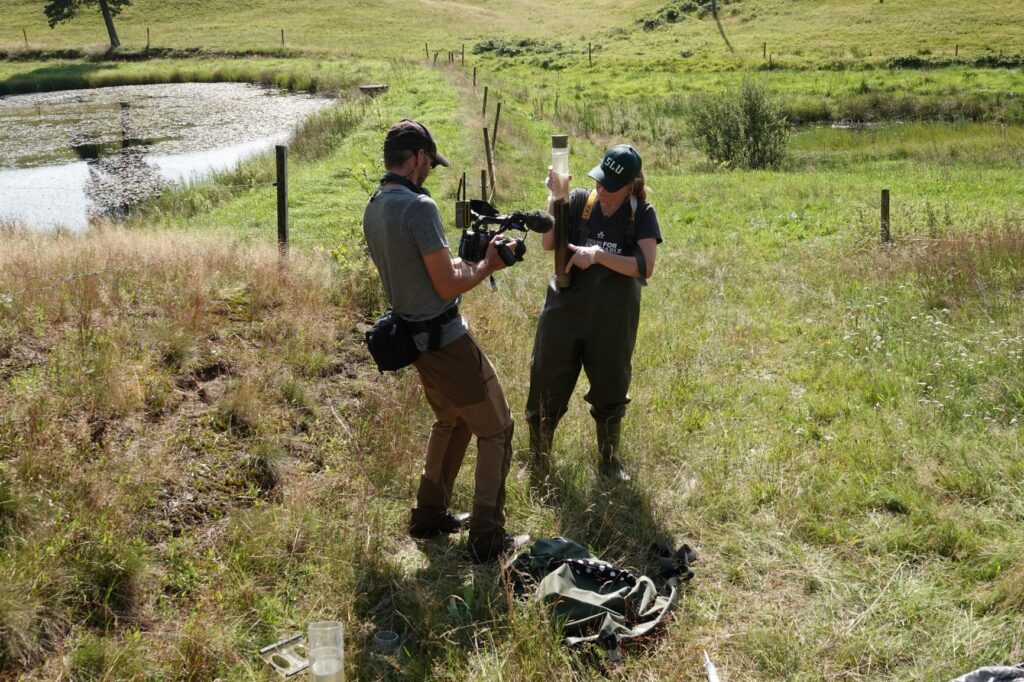
New sampling period for Cyanoblooms
This week the second field sampling was done in 80 of ”our” buffer wetlands to investigate occurence of Cyano algae and cyano toxin, as part of our networking collaboration with Pablo Urrutia Cordero at Lund univiserity. This time it was Sam (working for Pablo) who did the field work.
